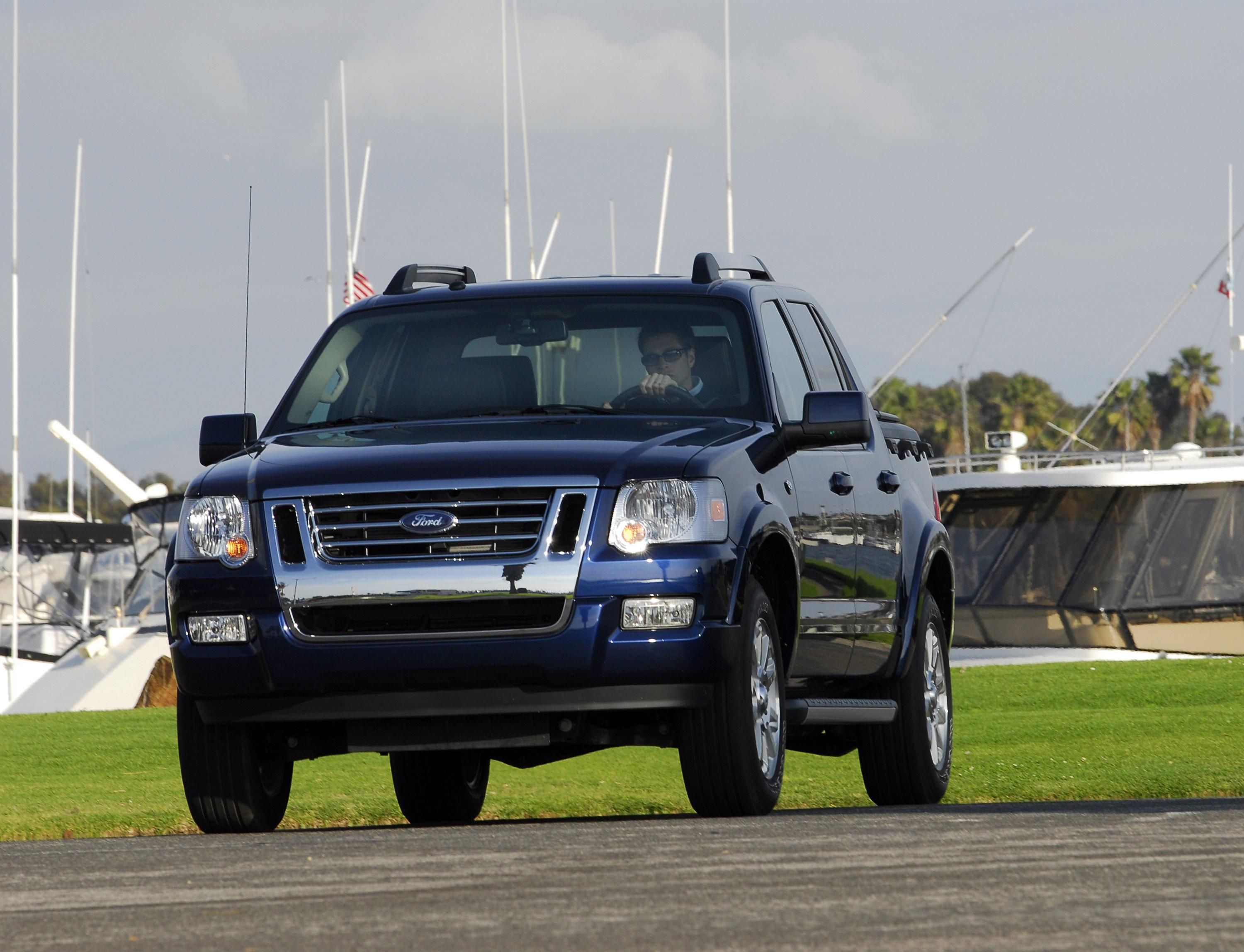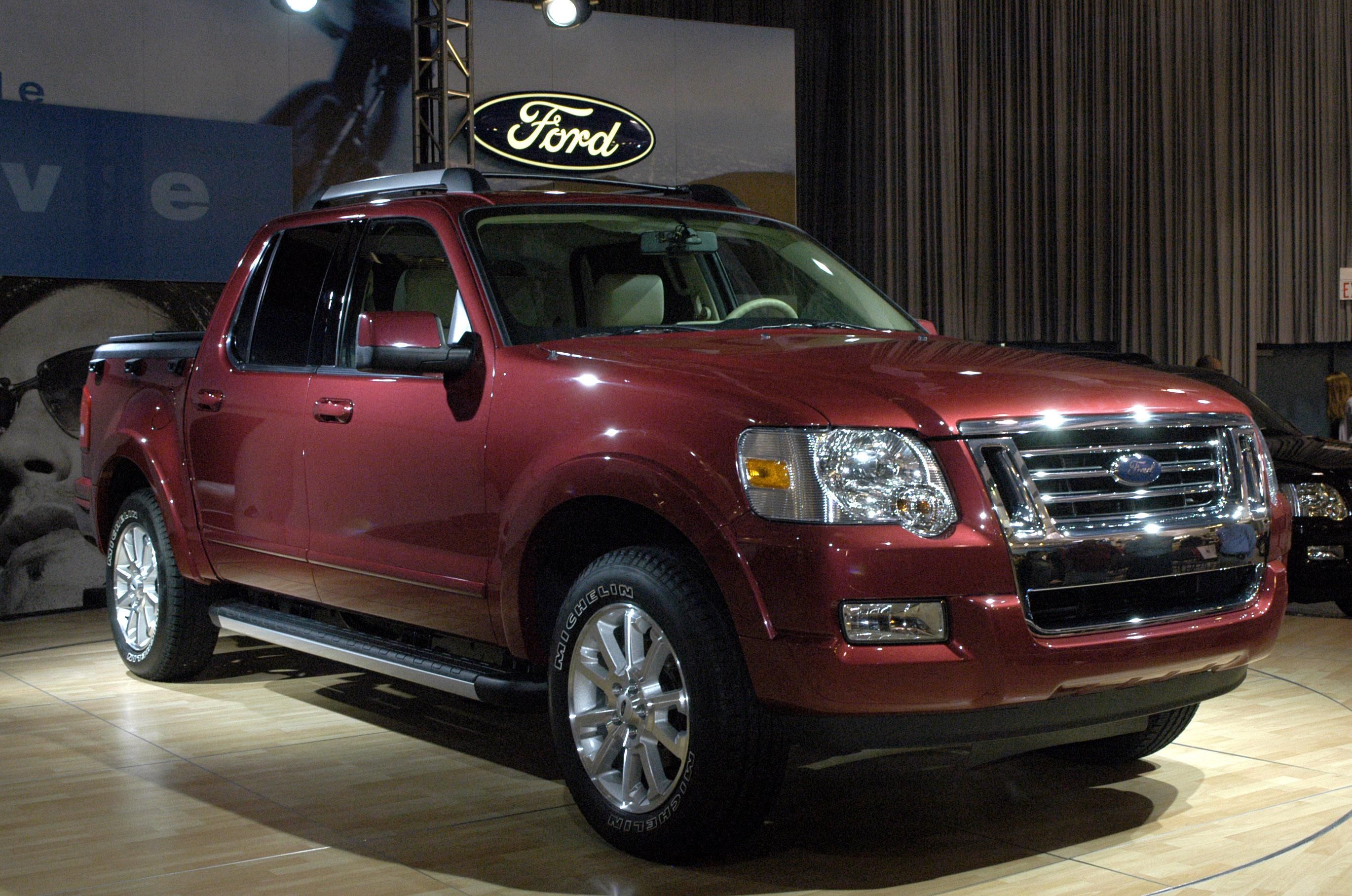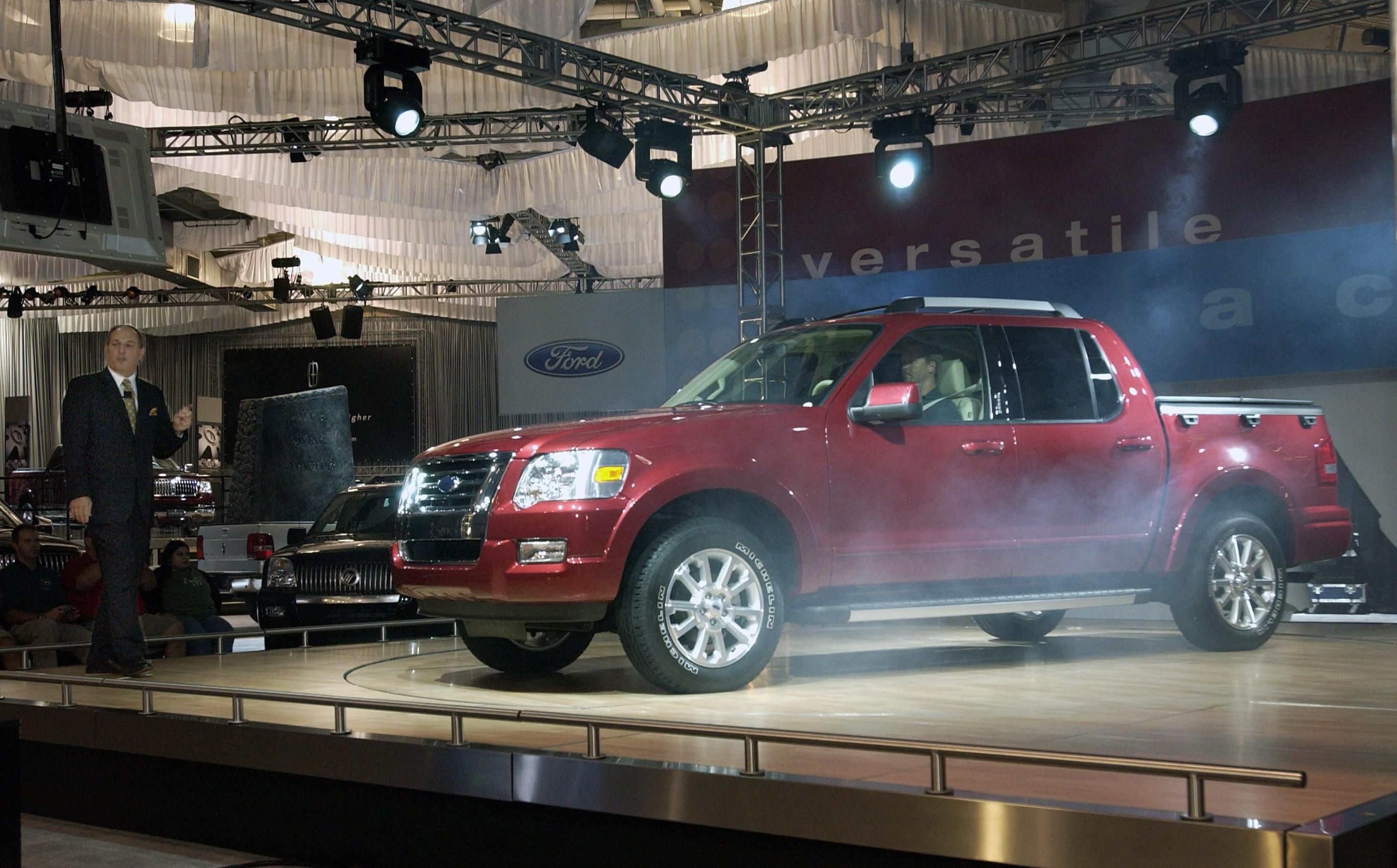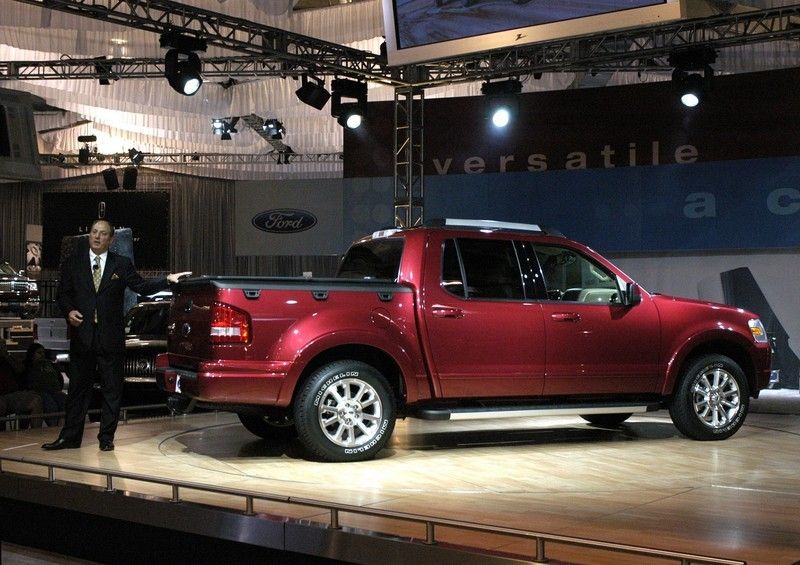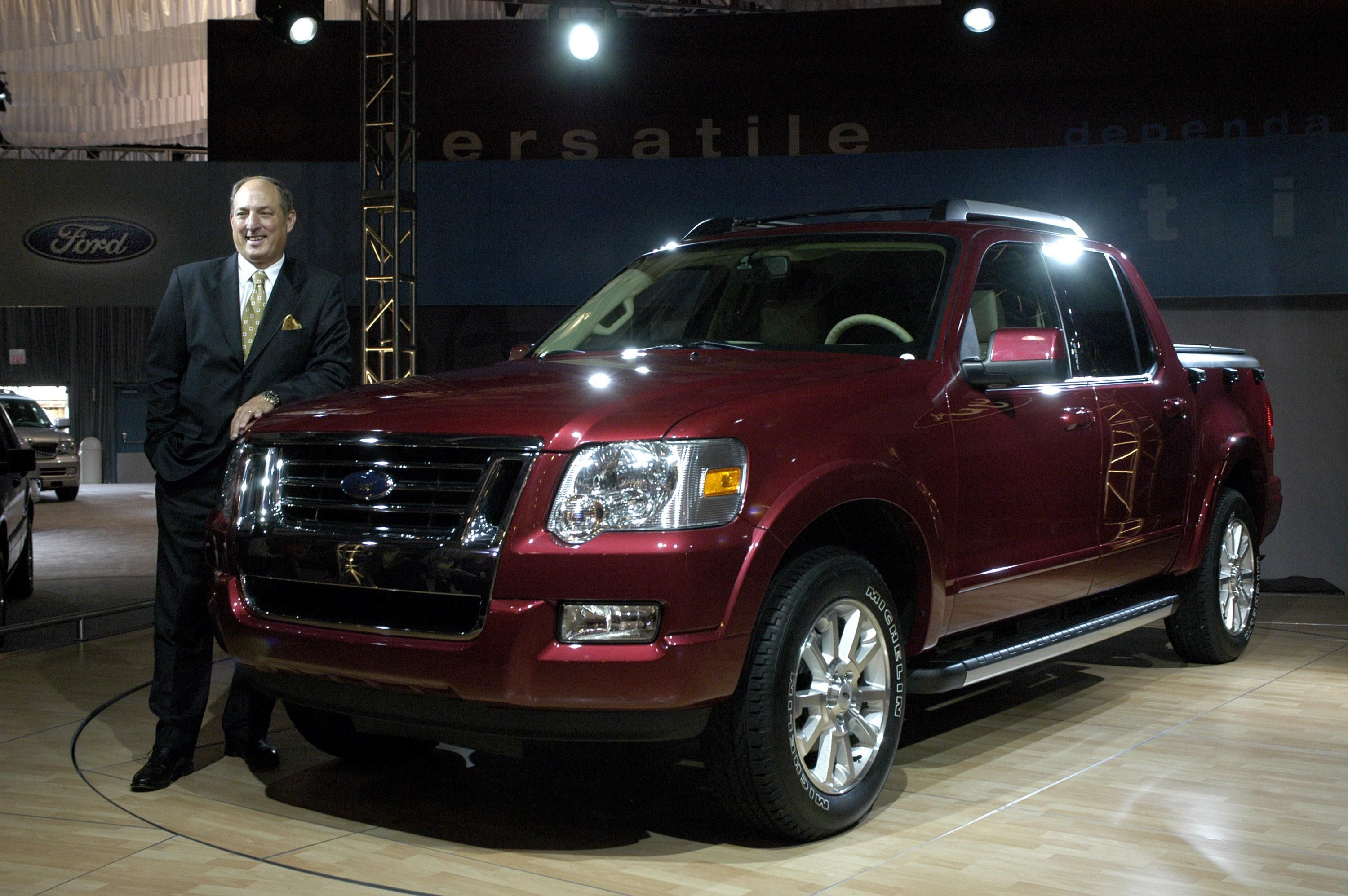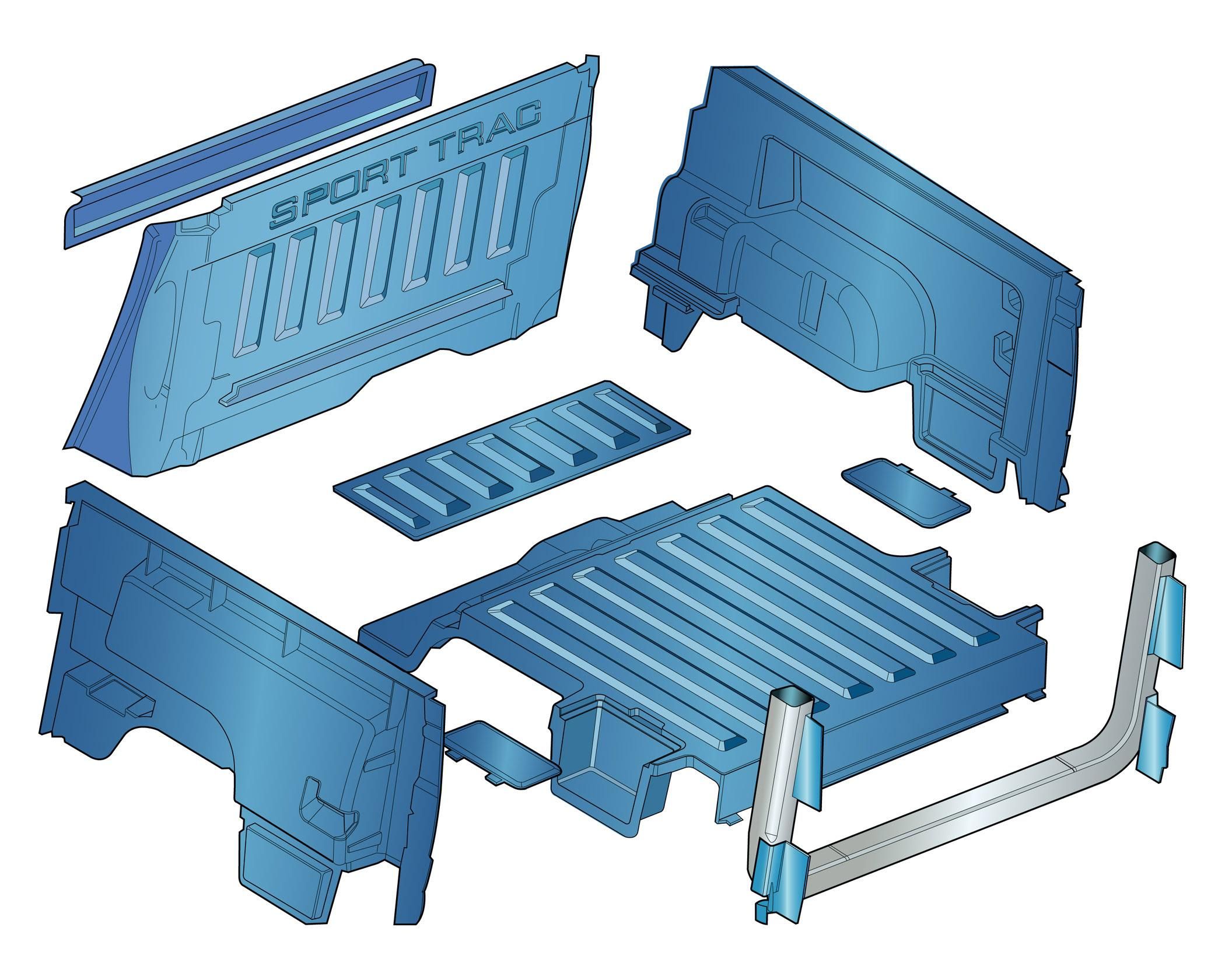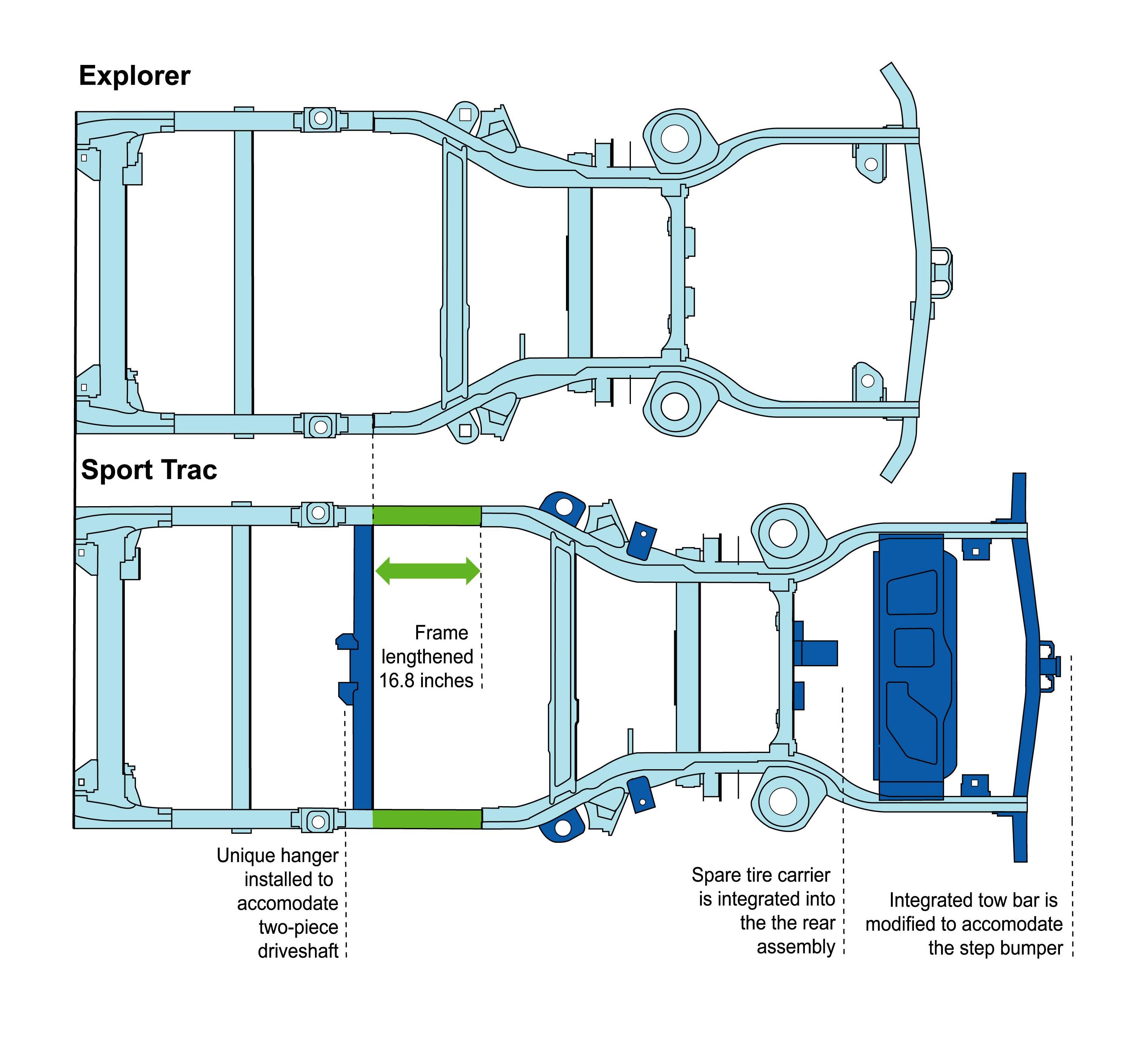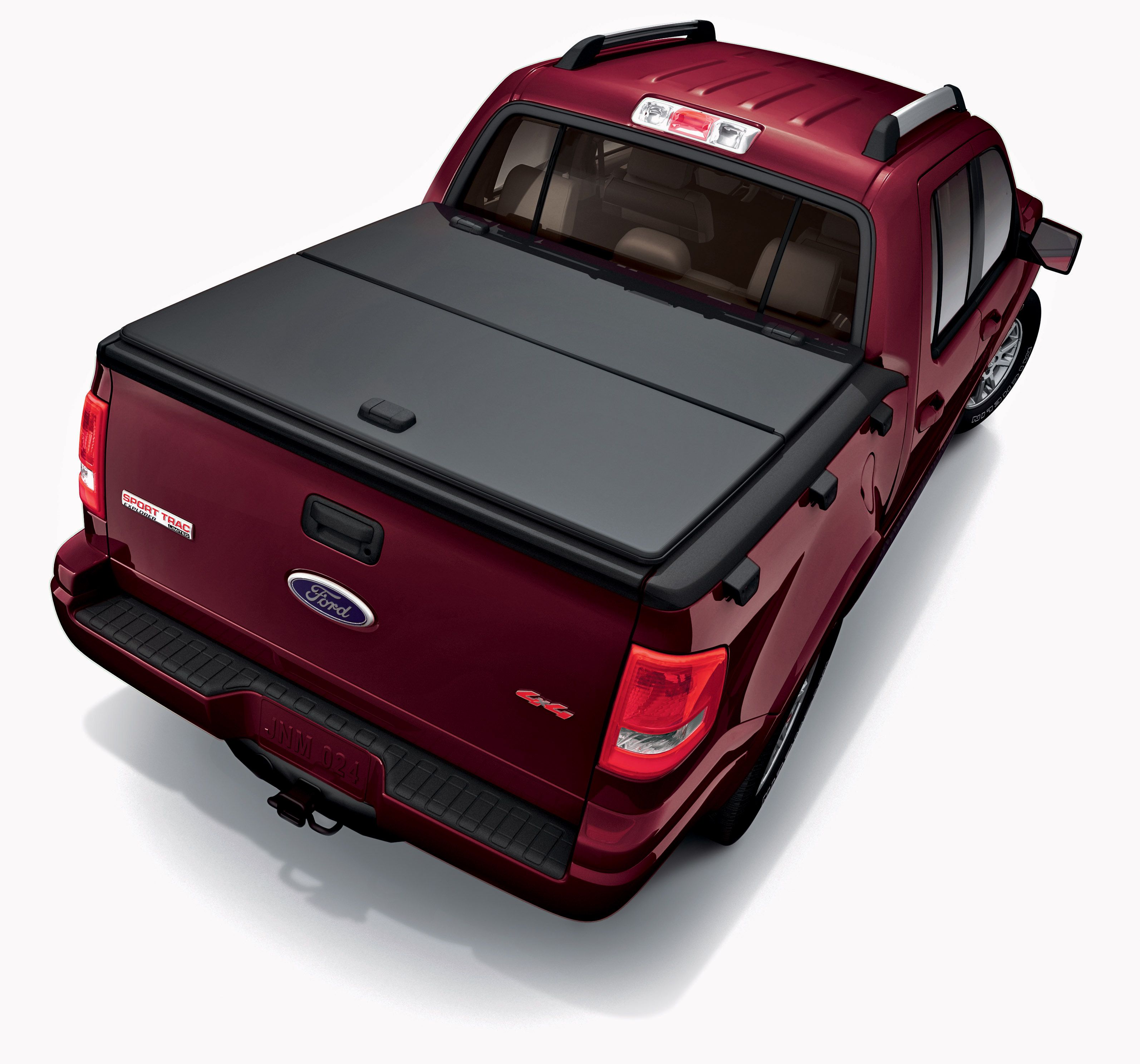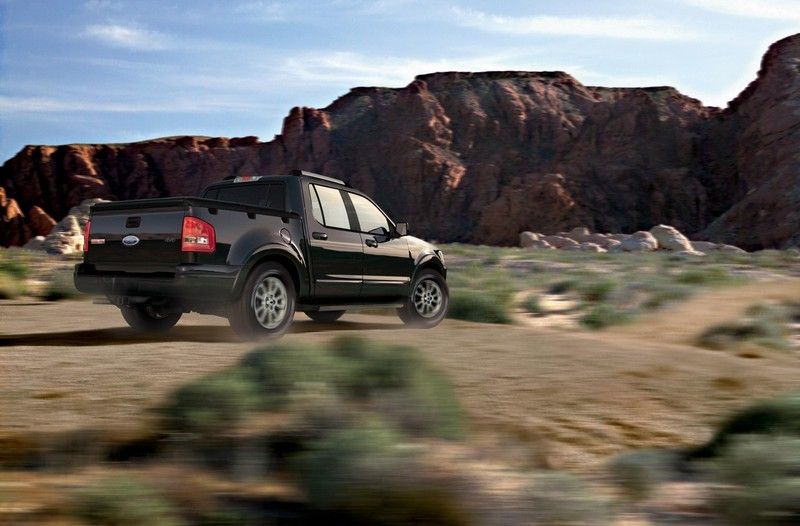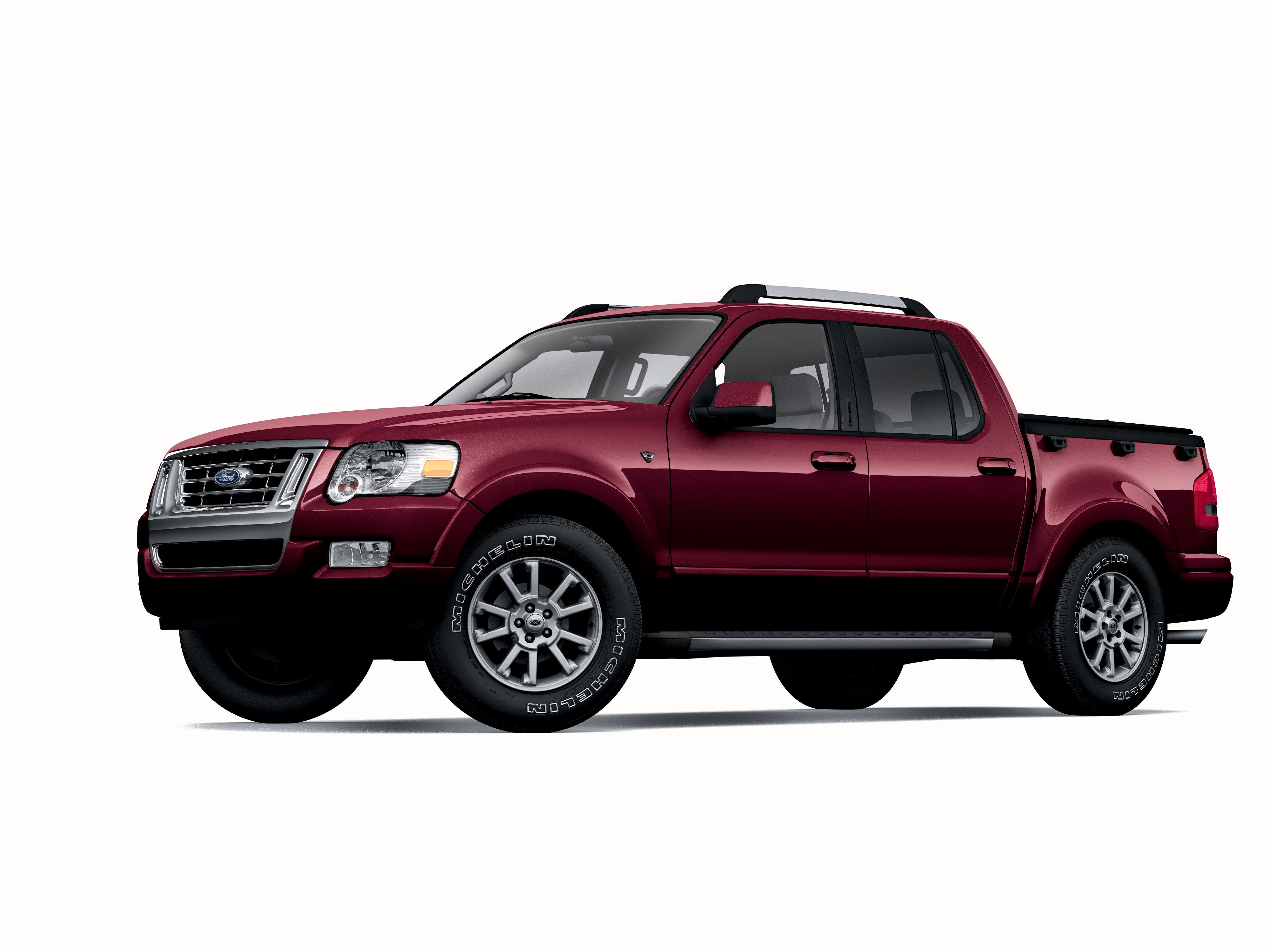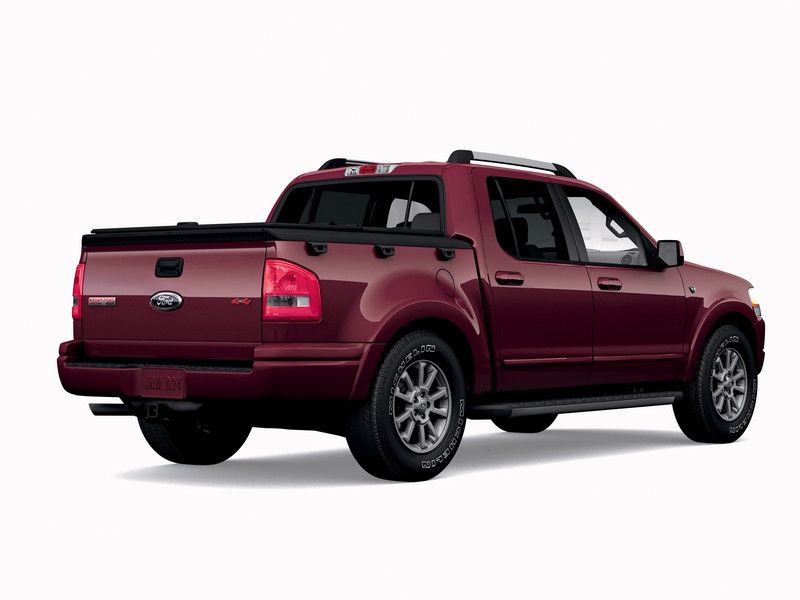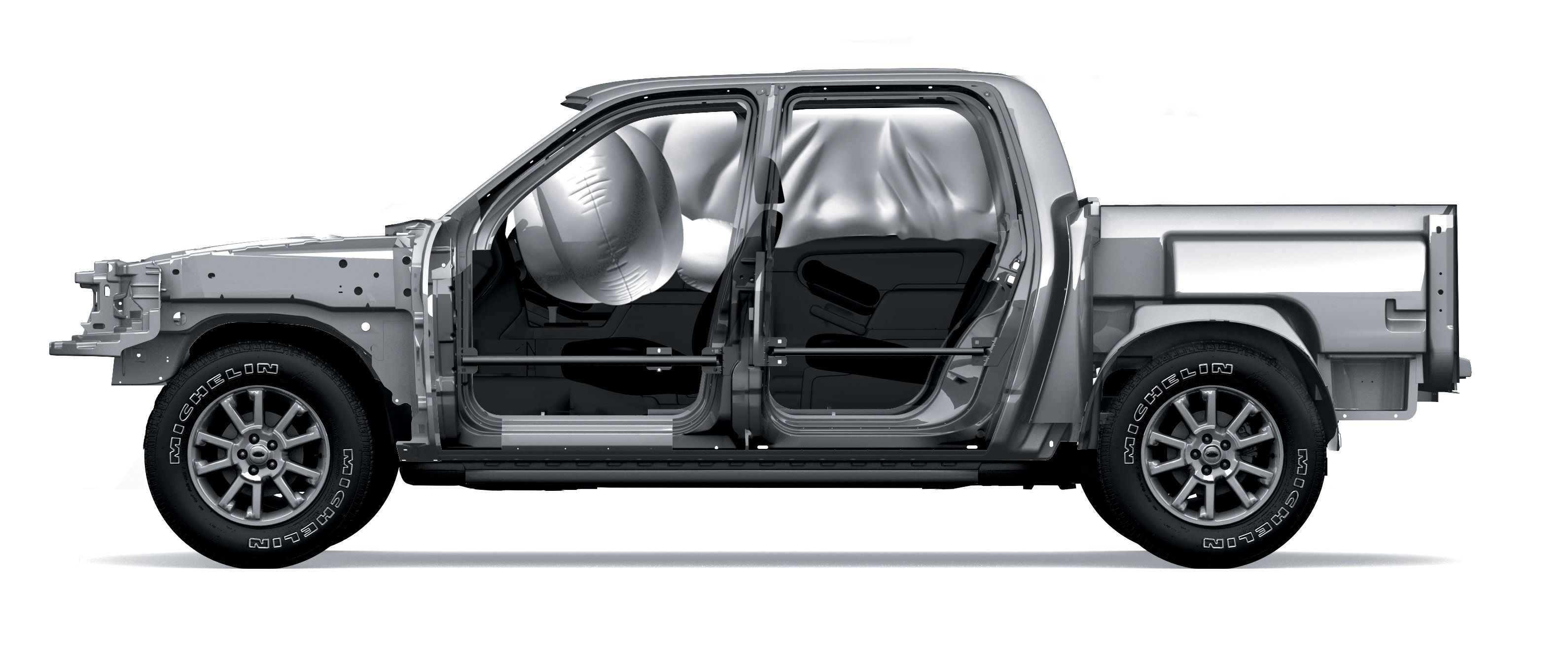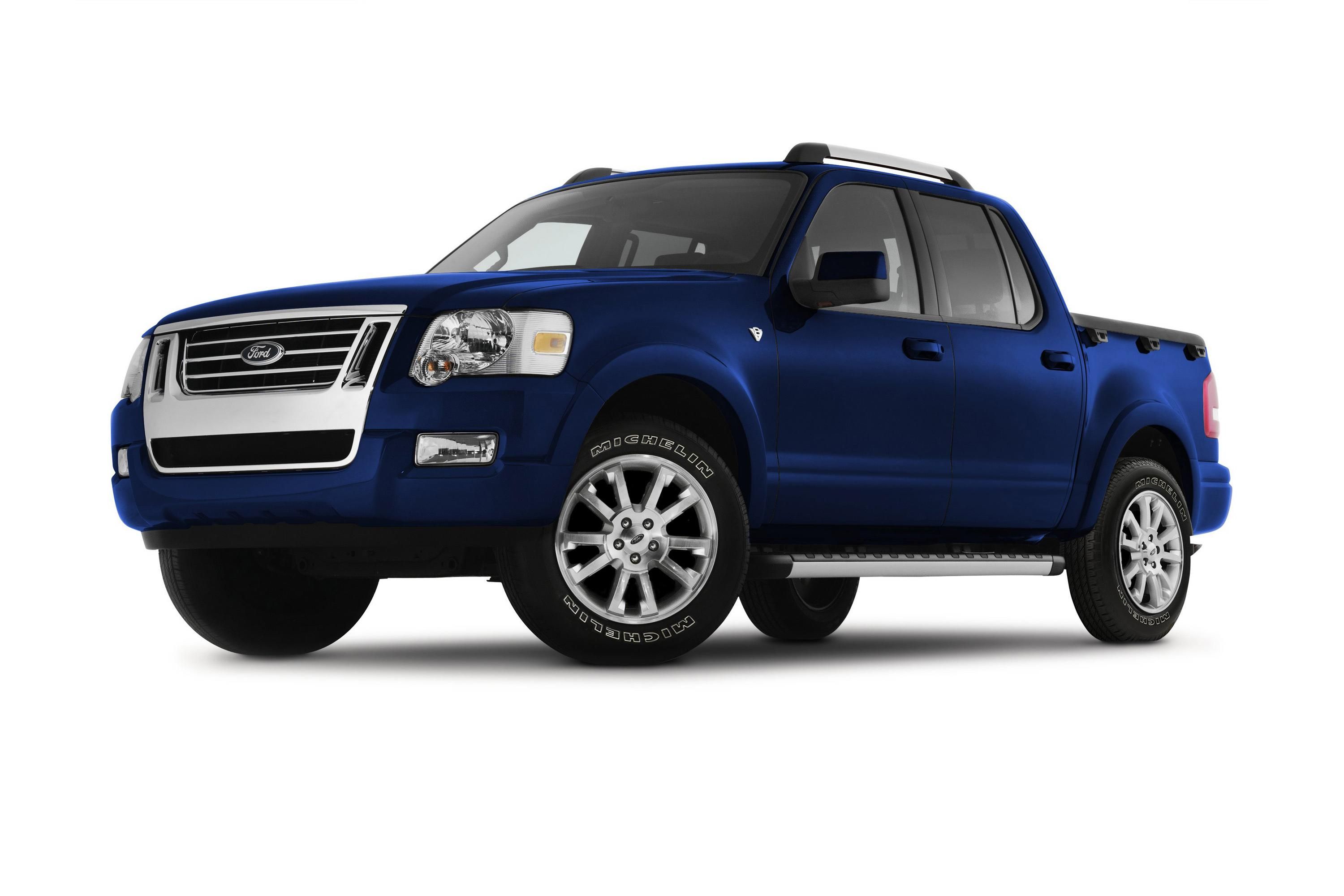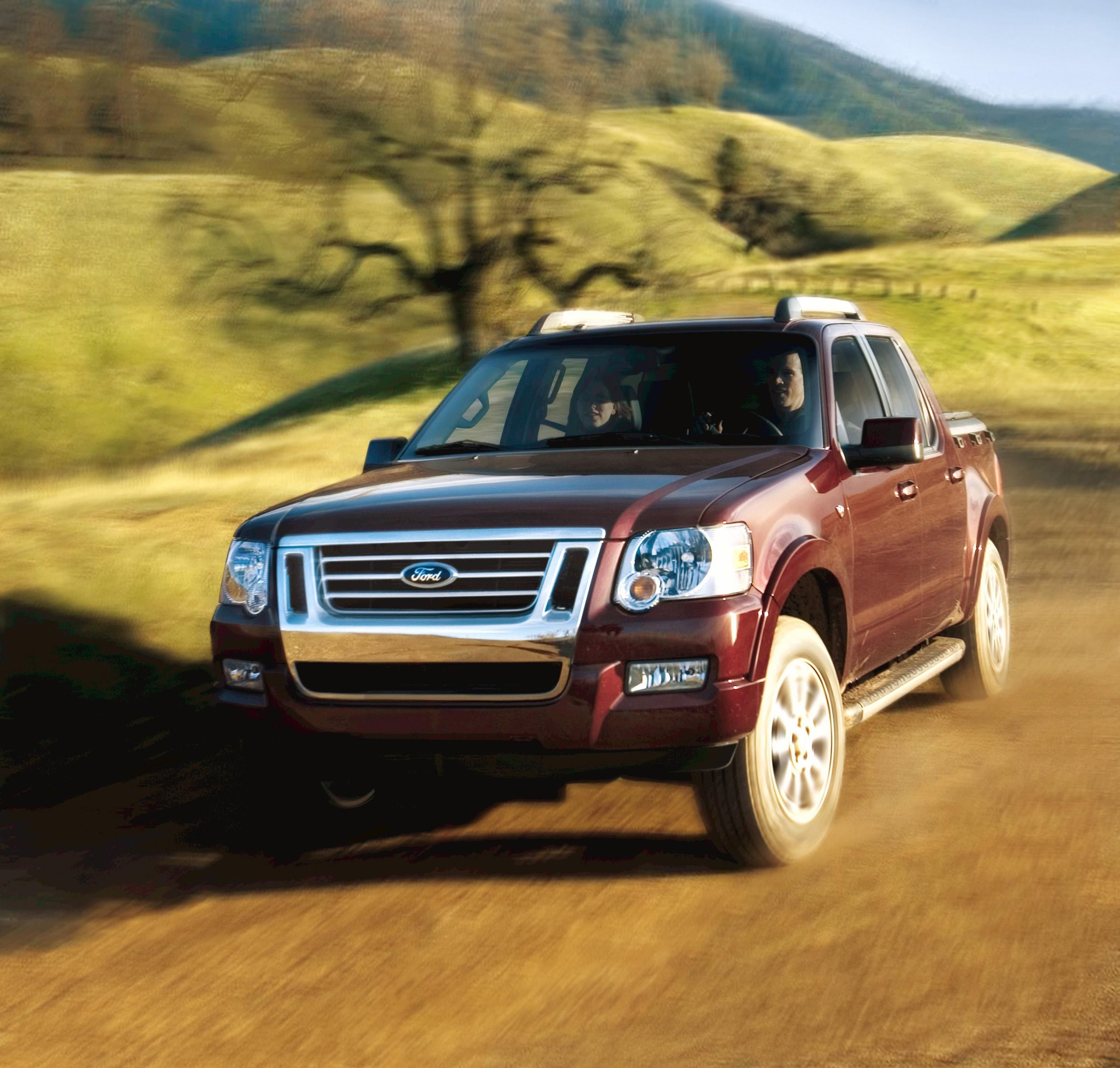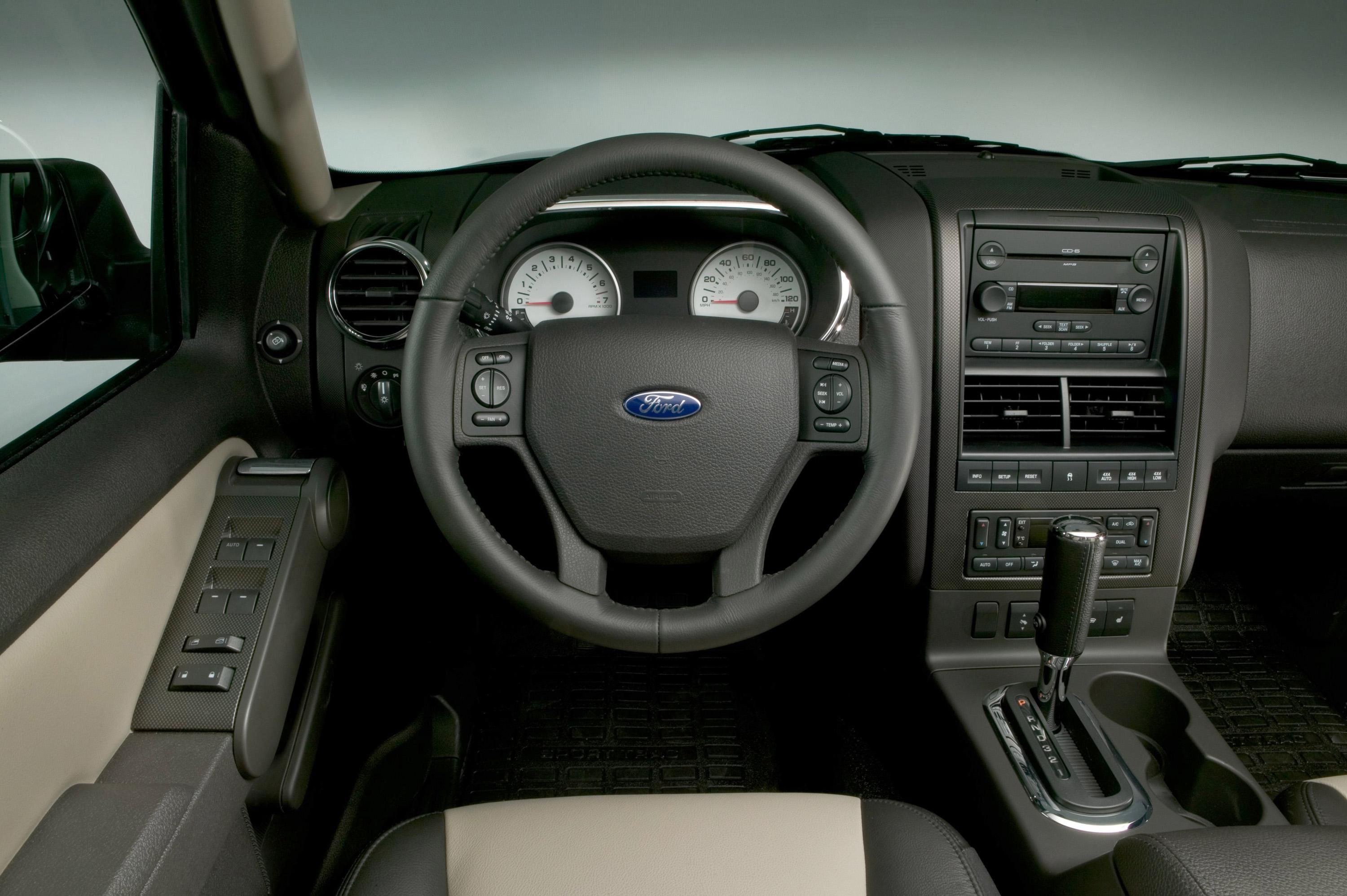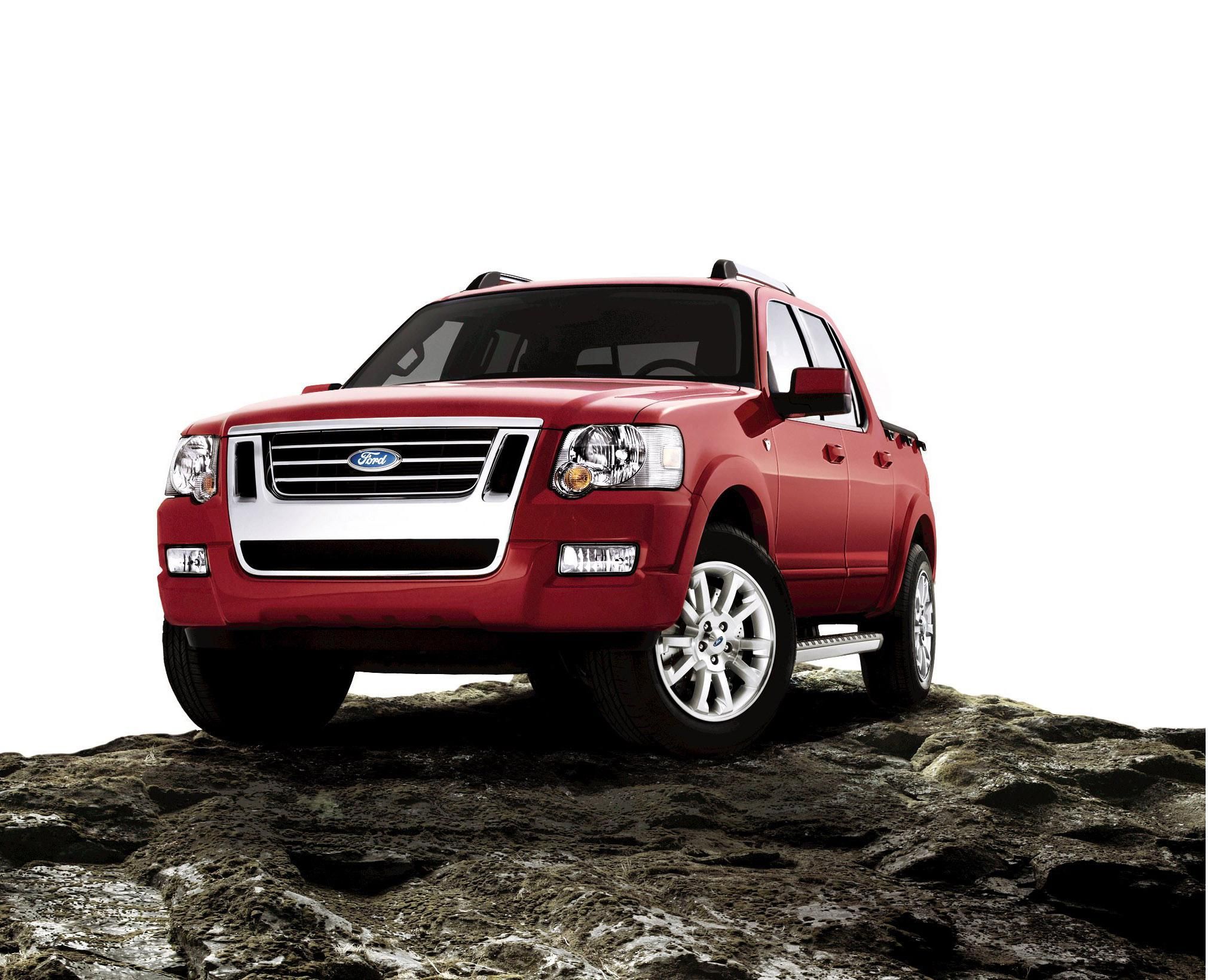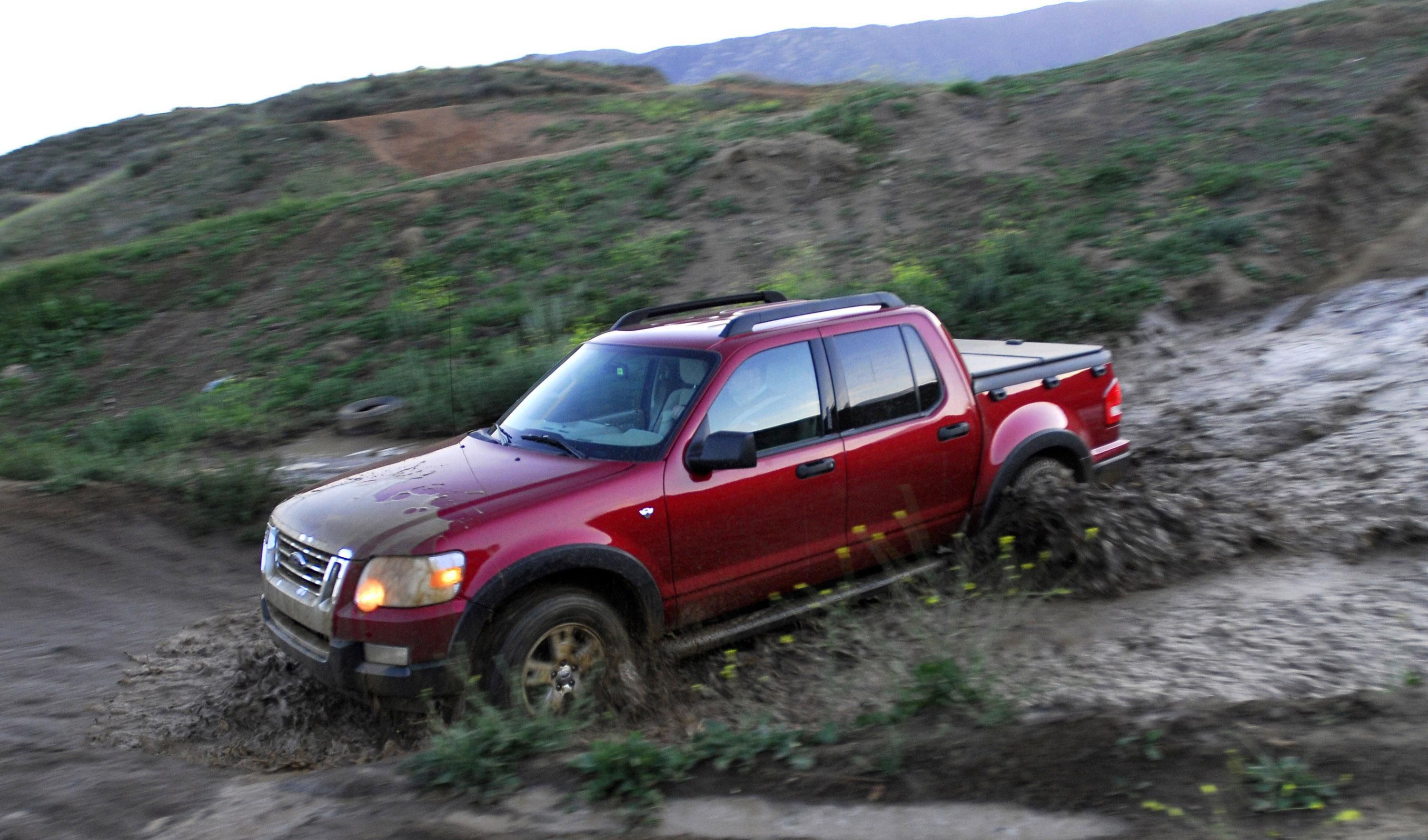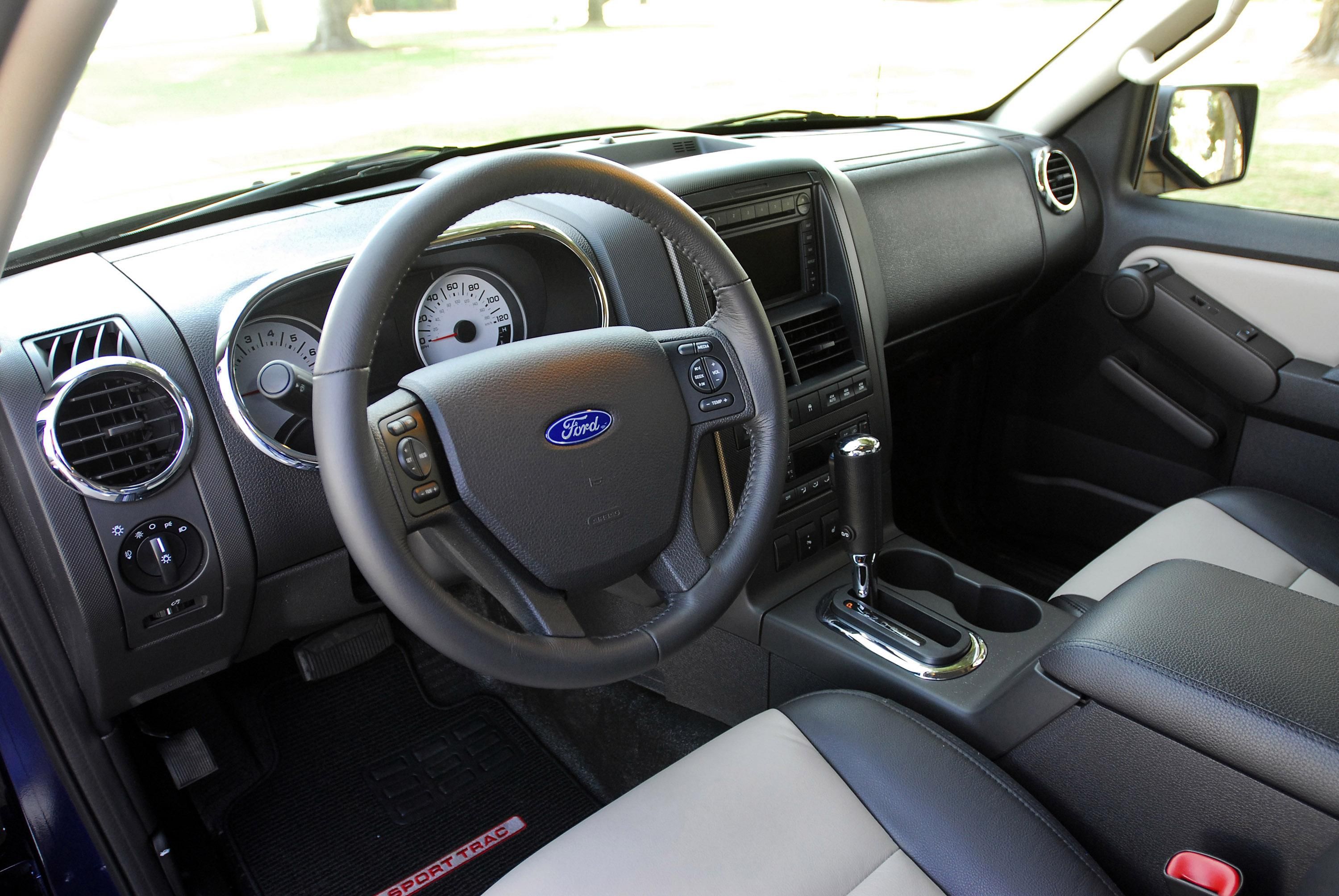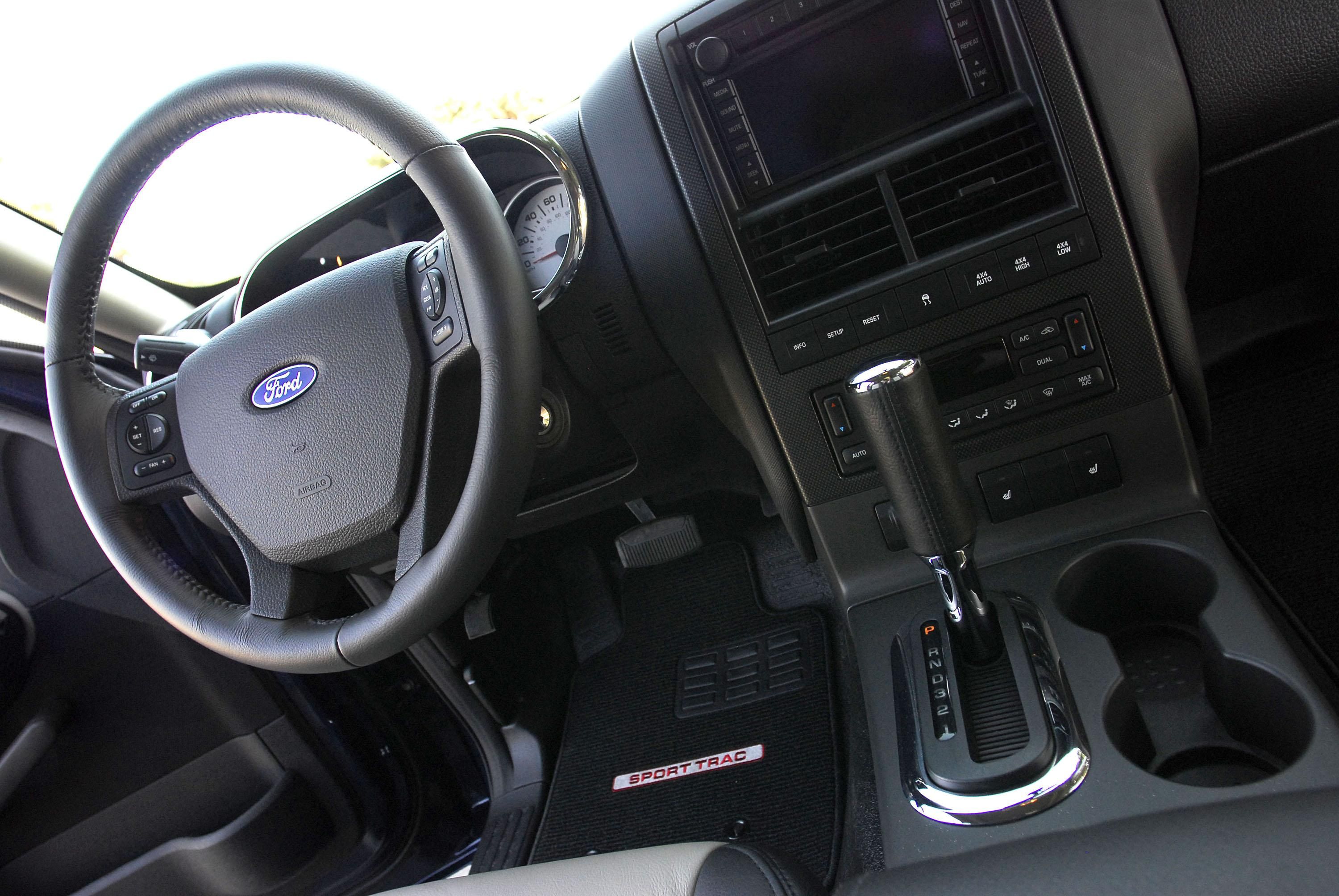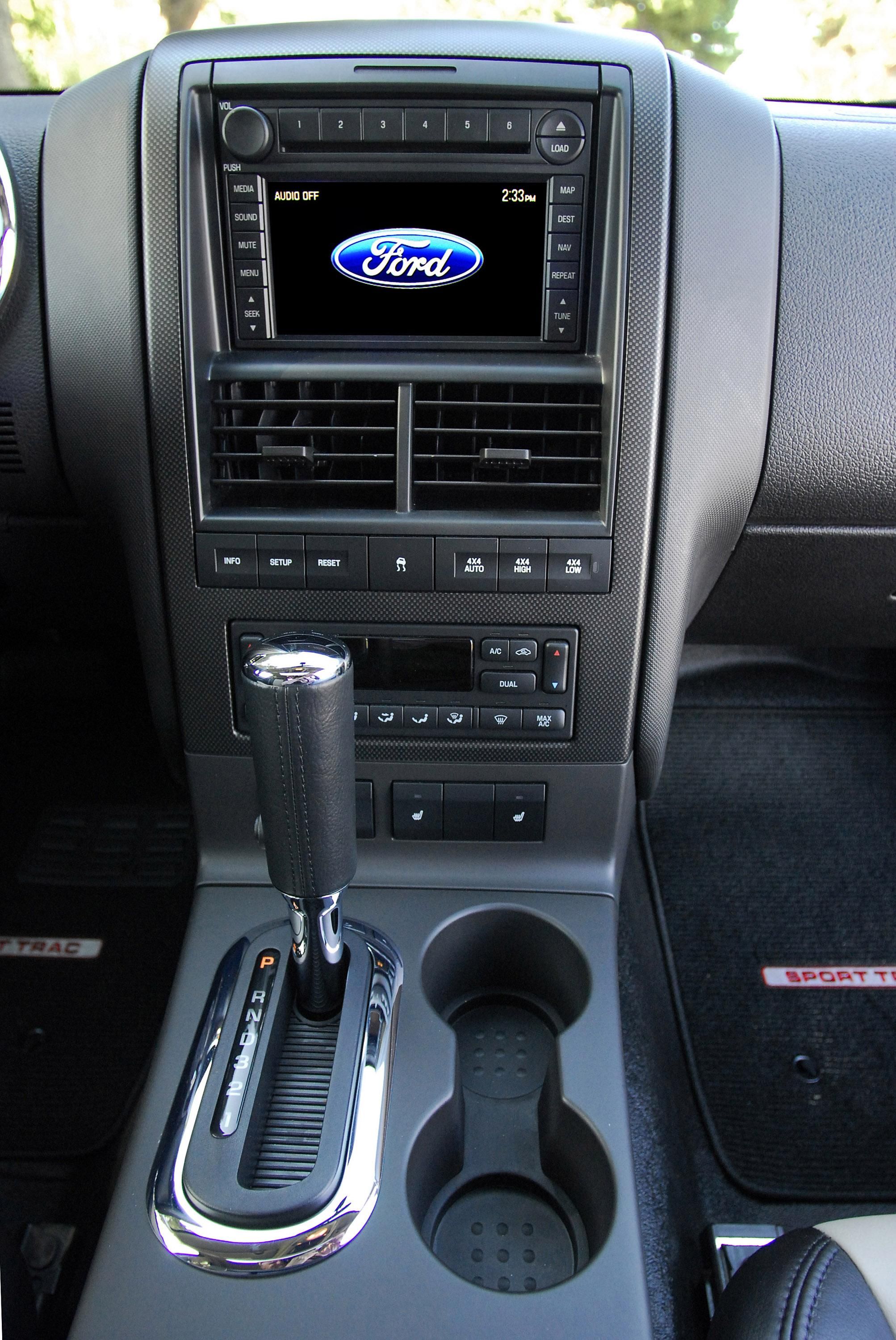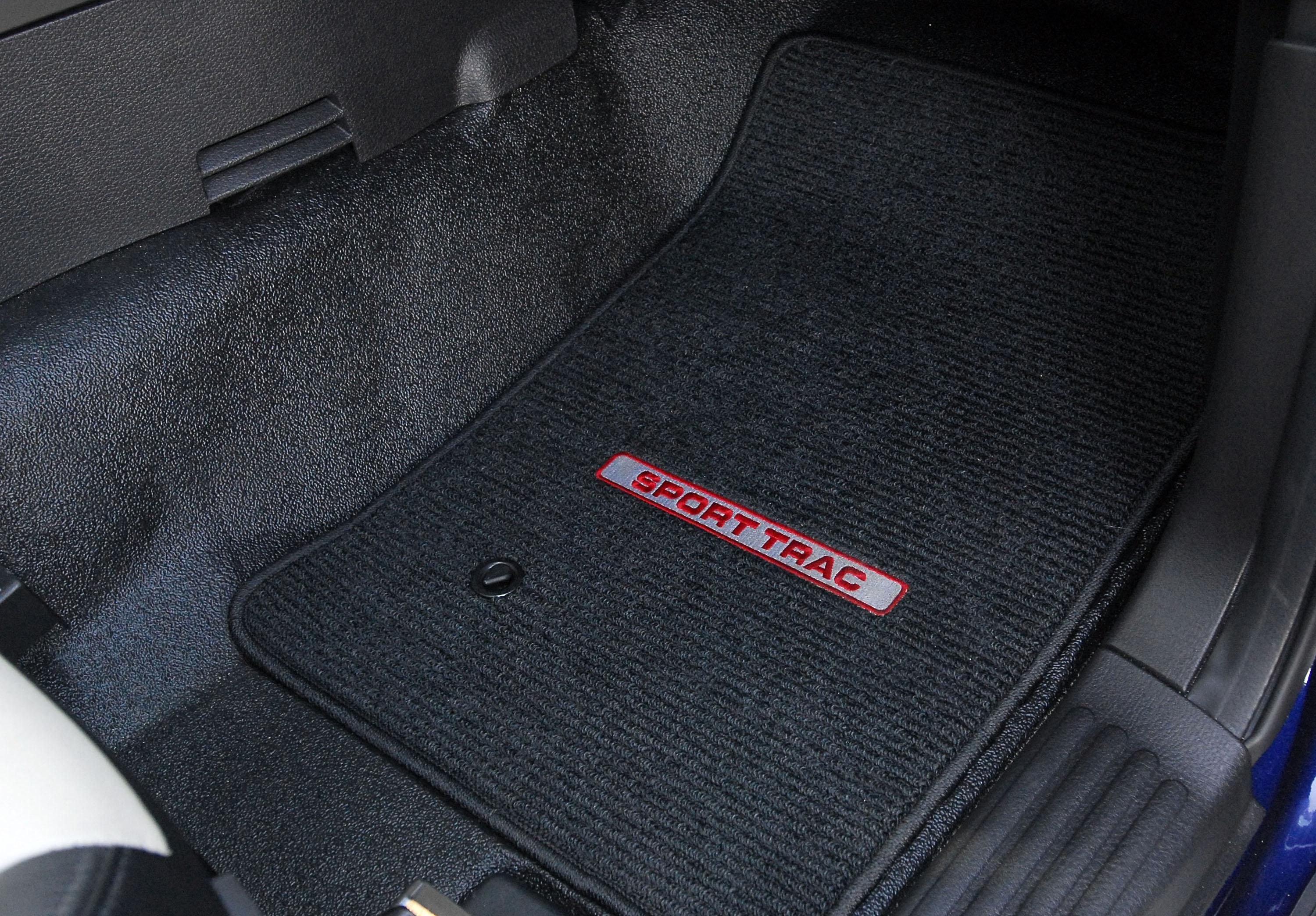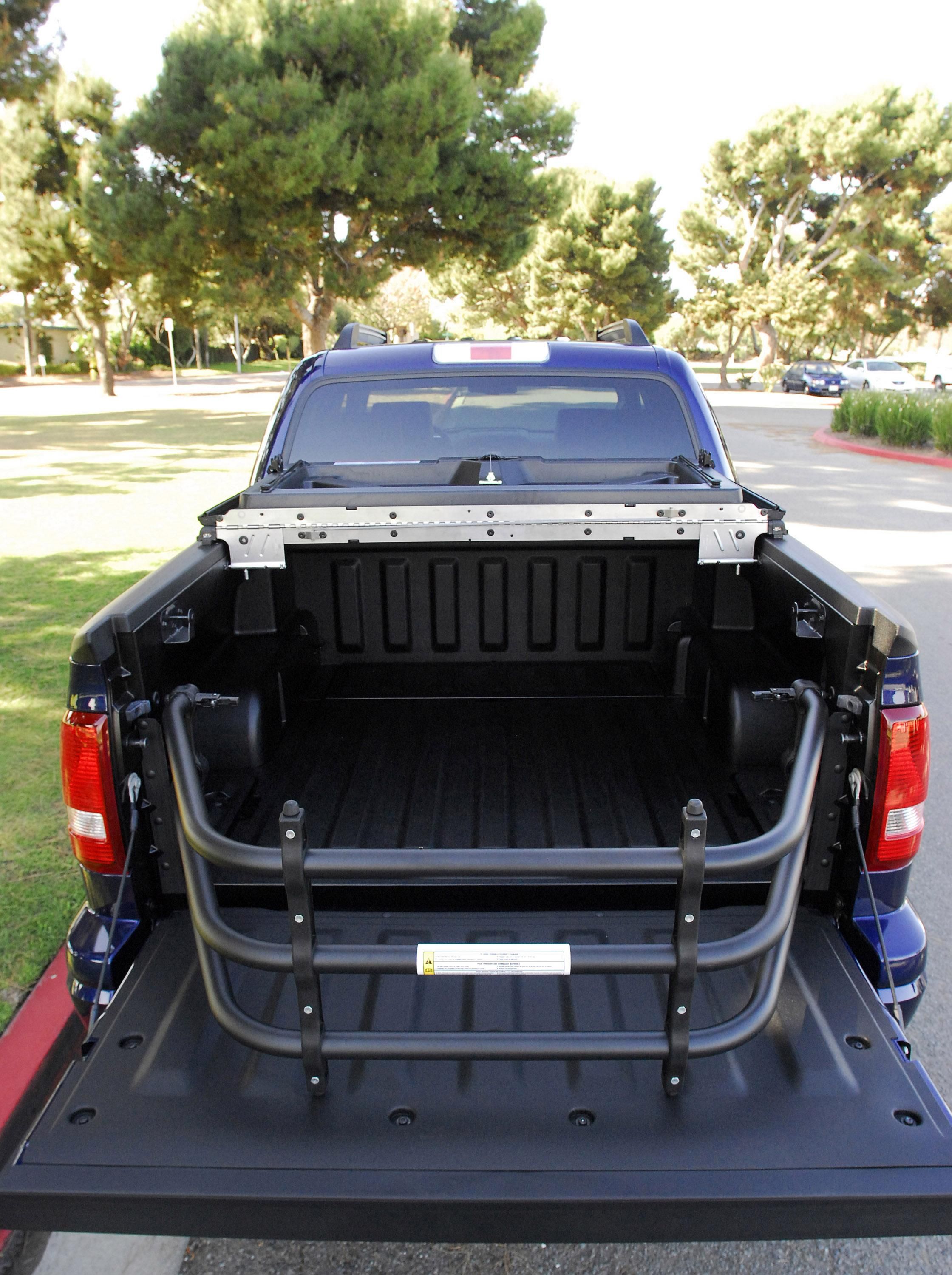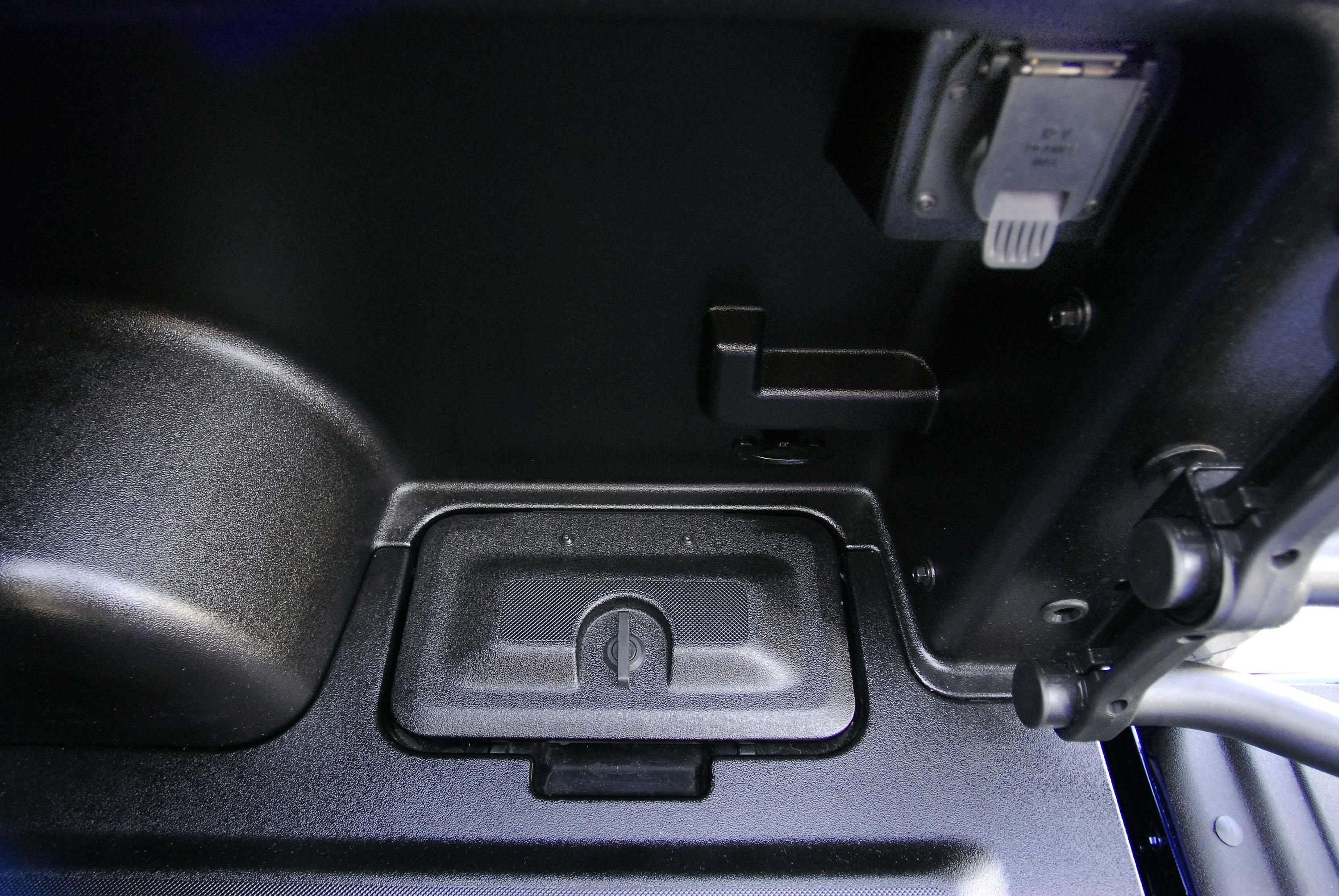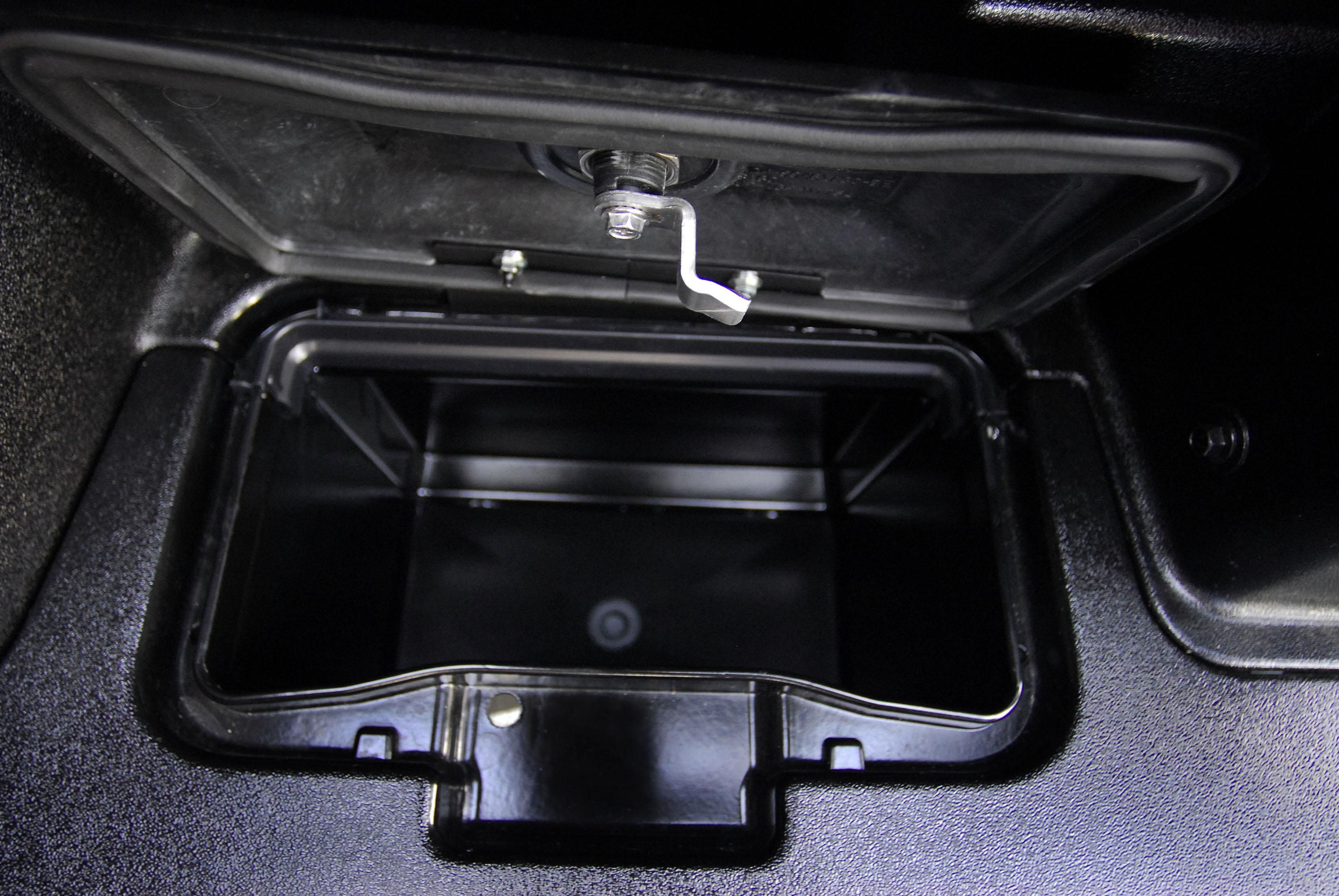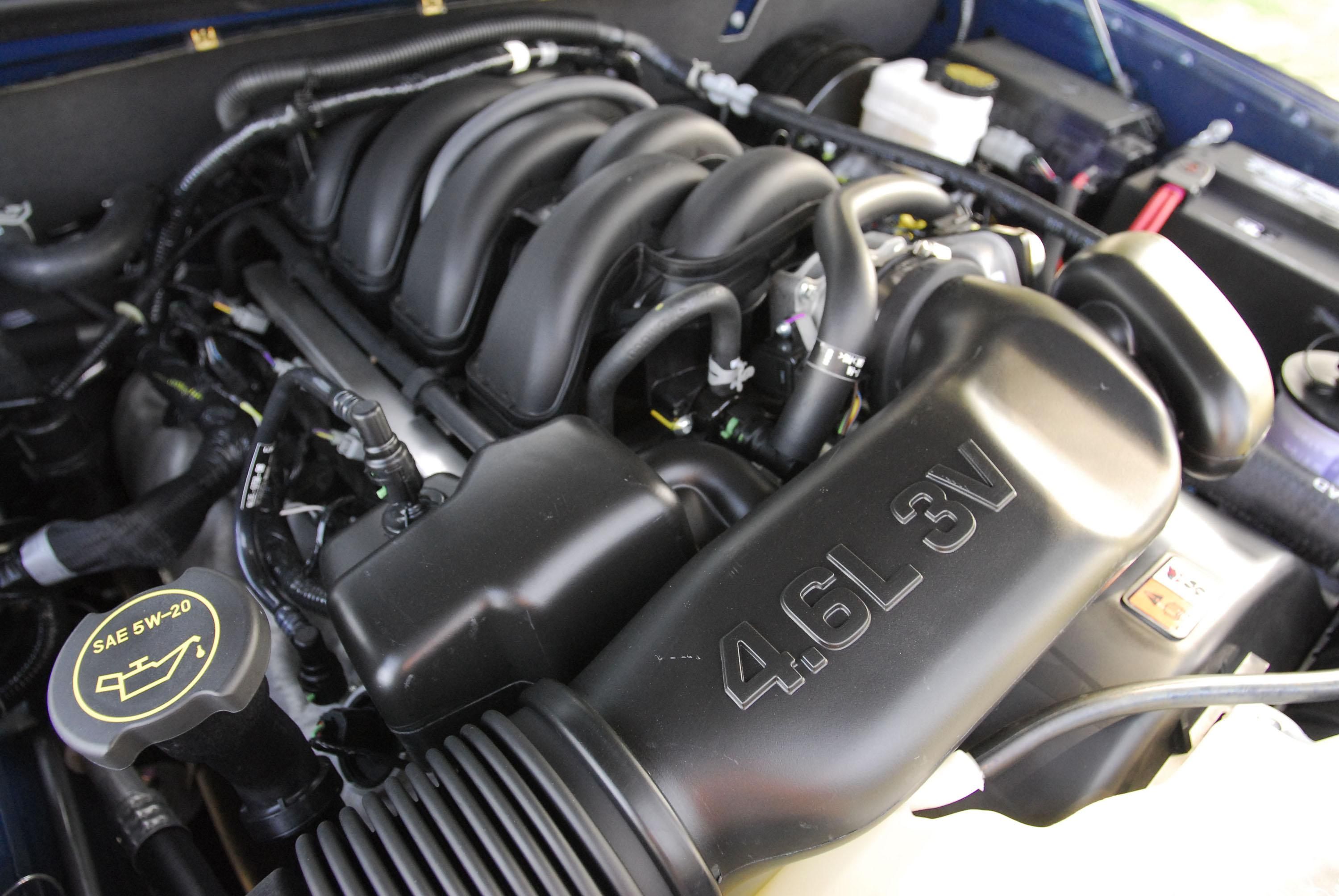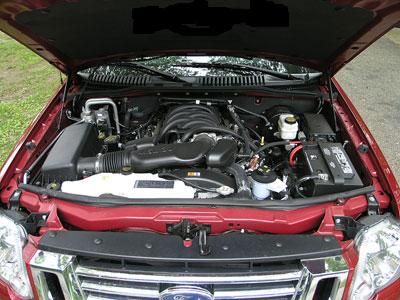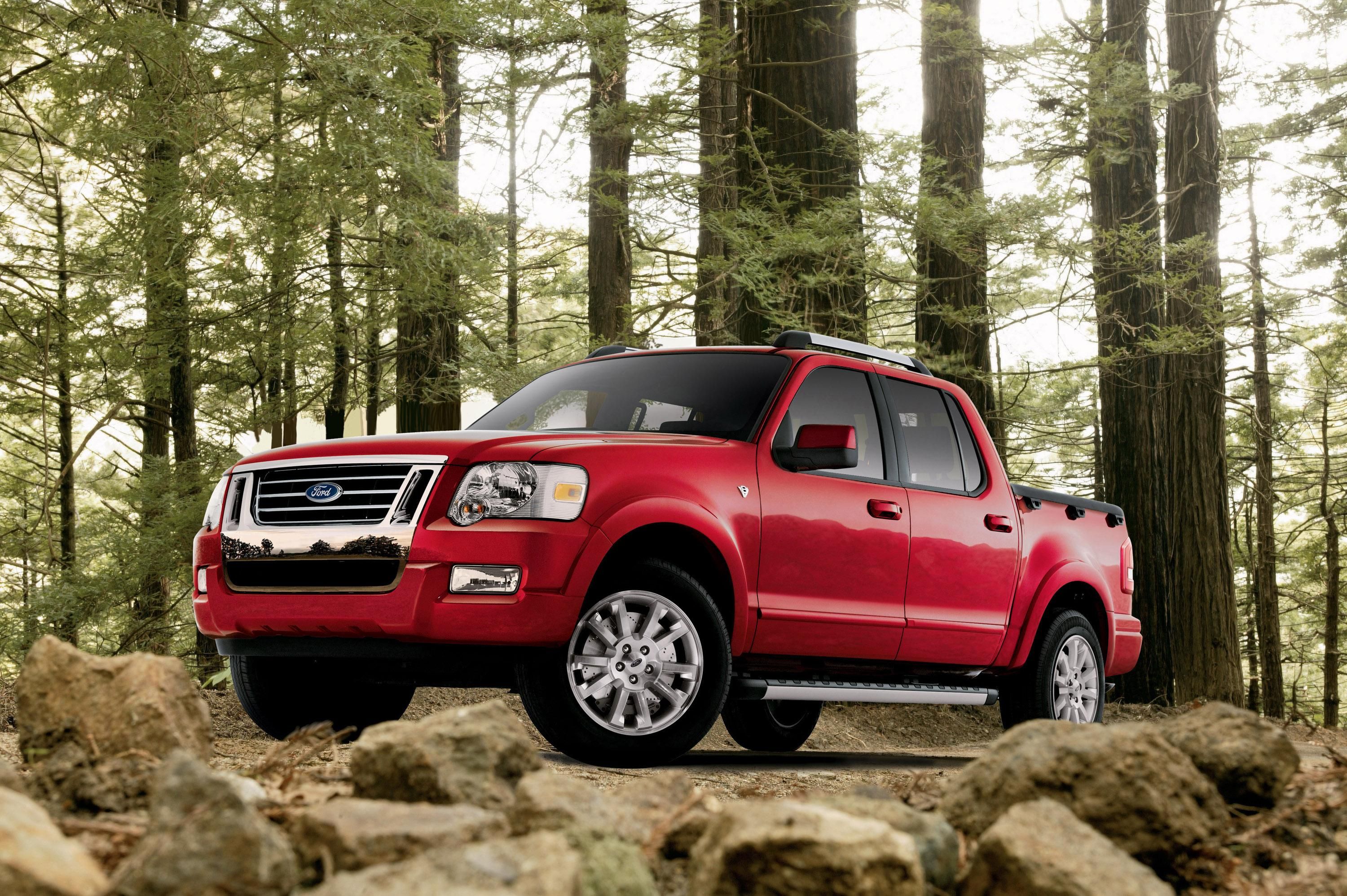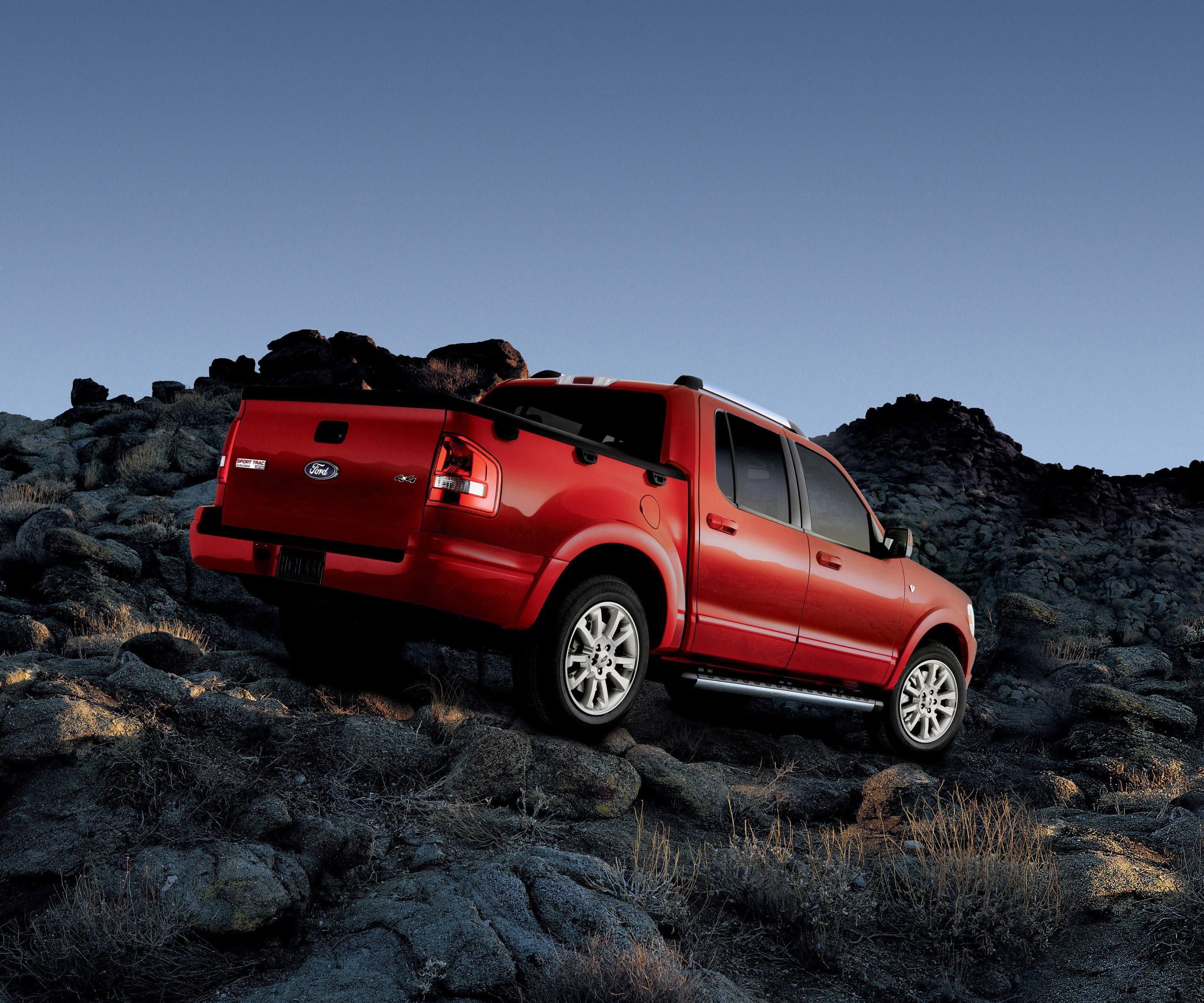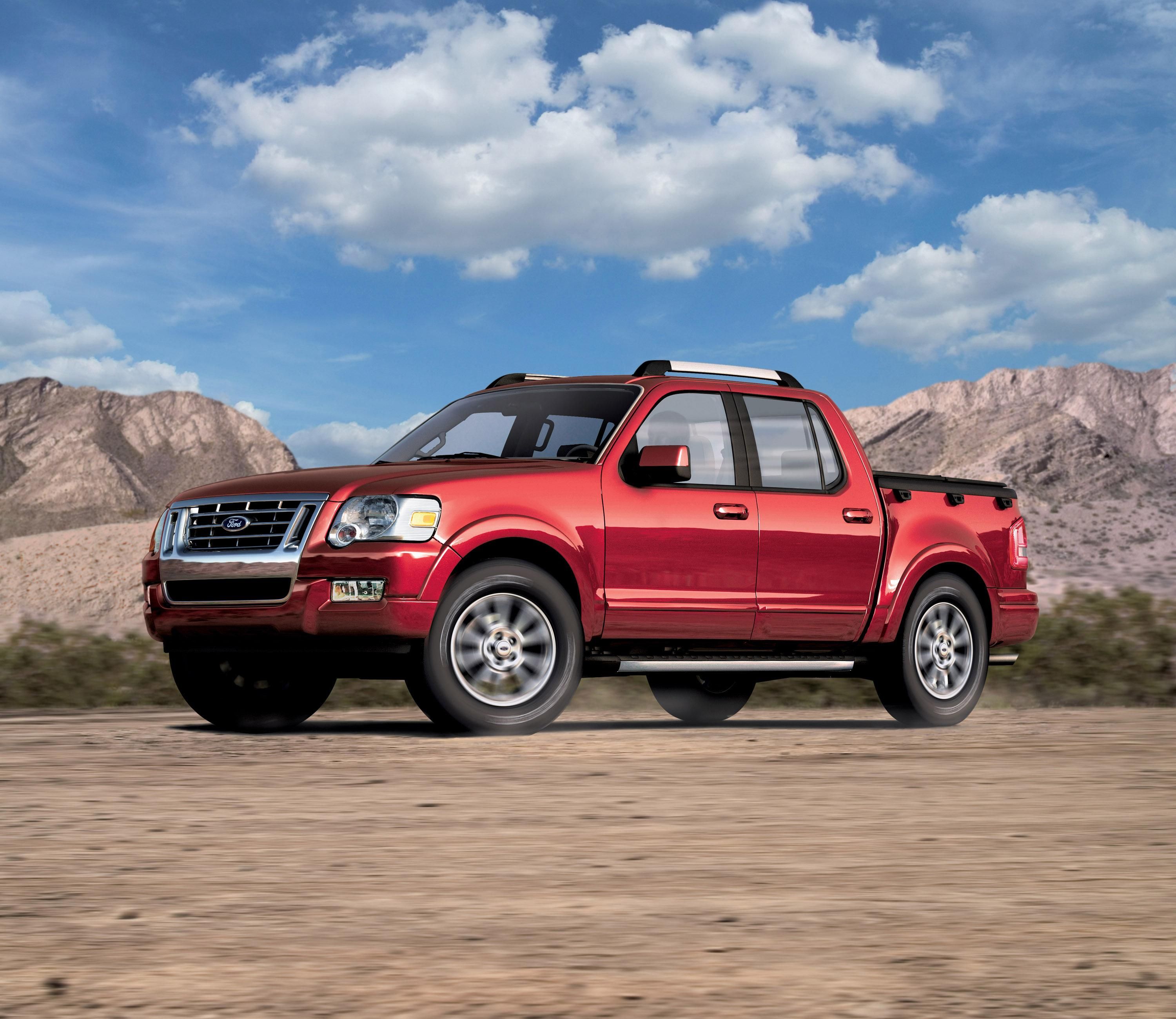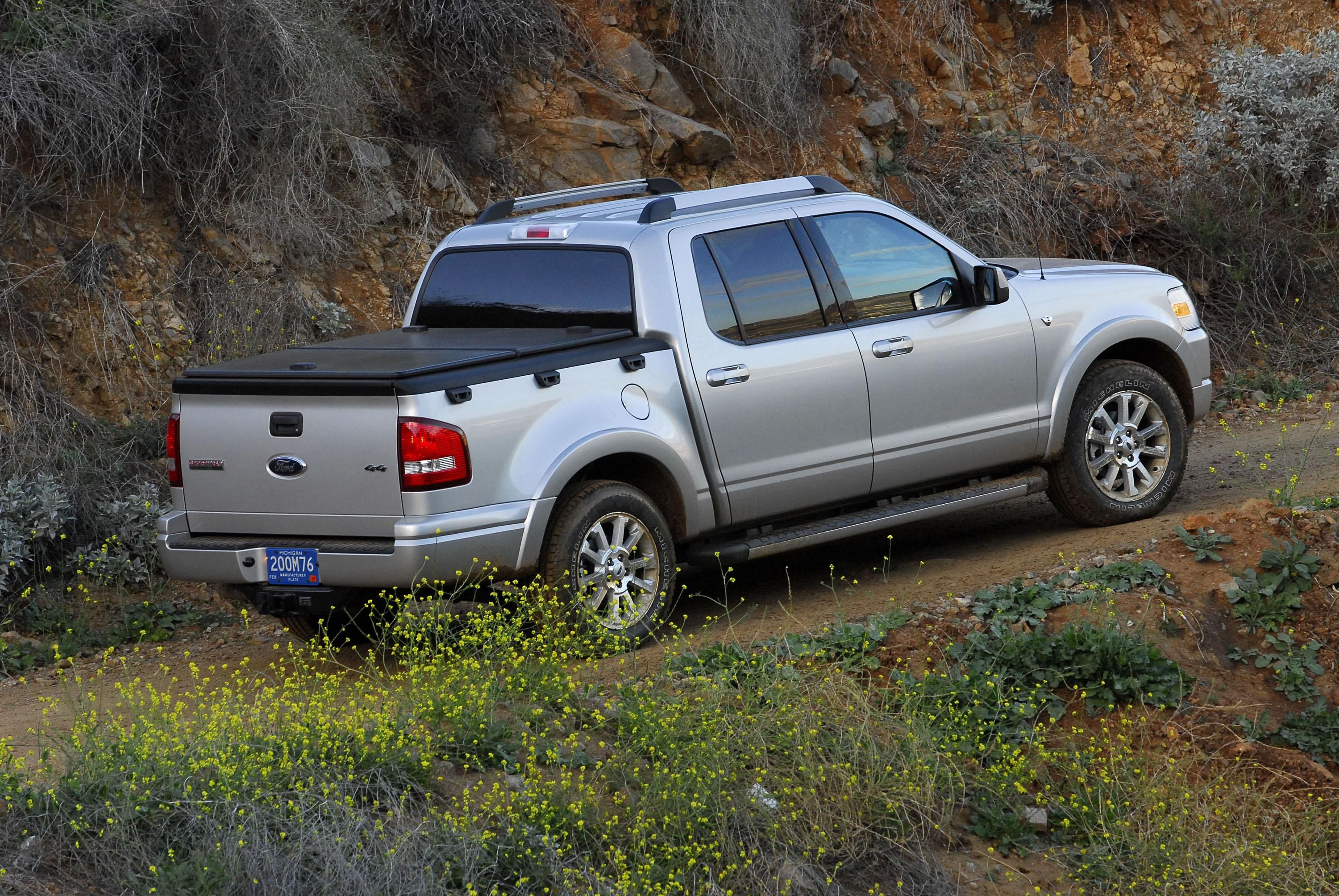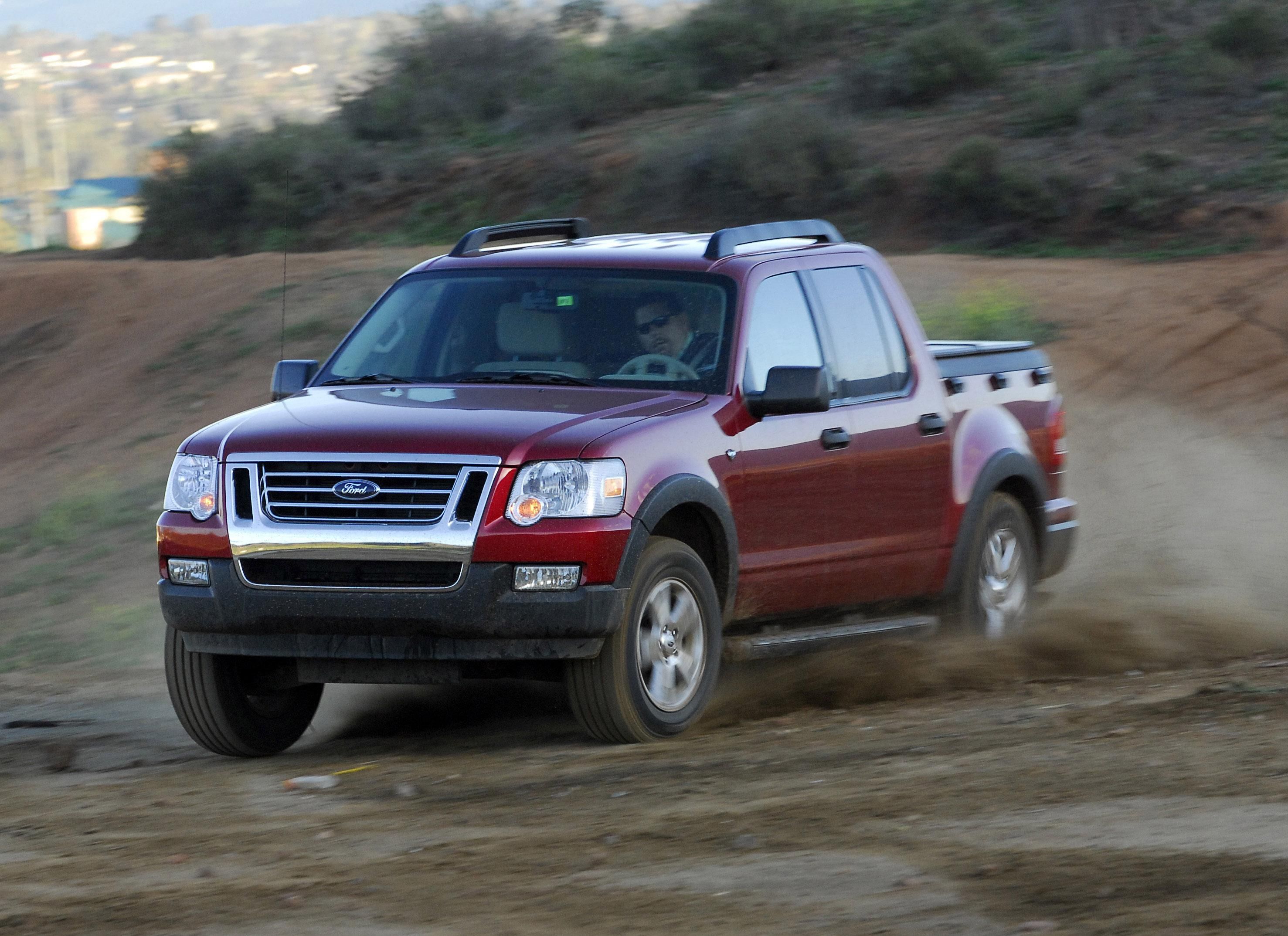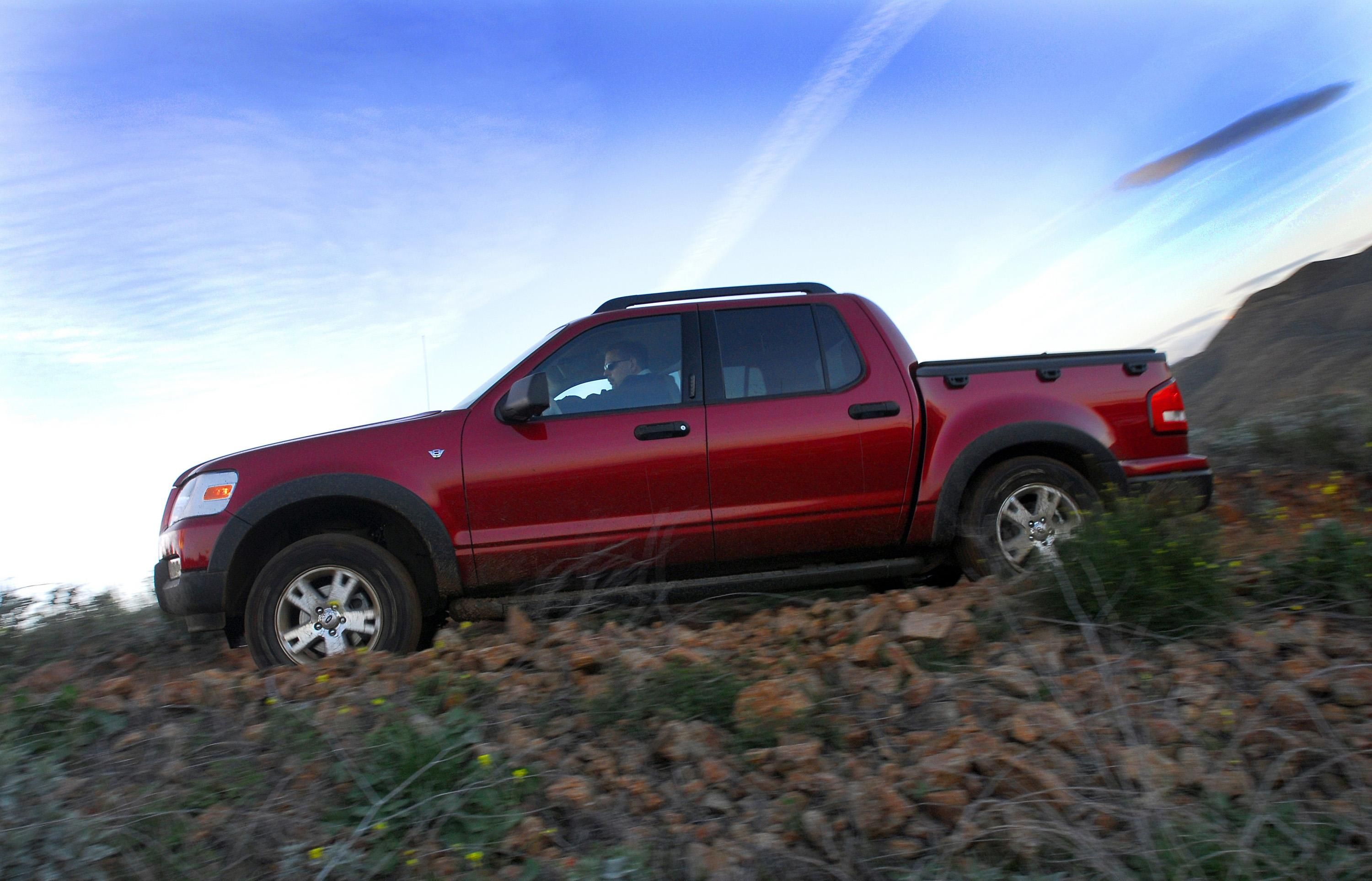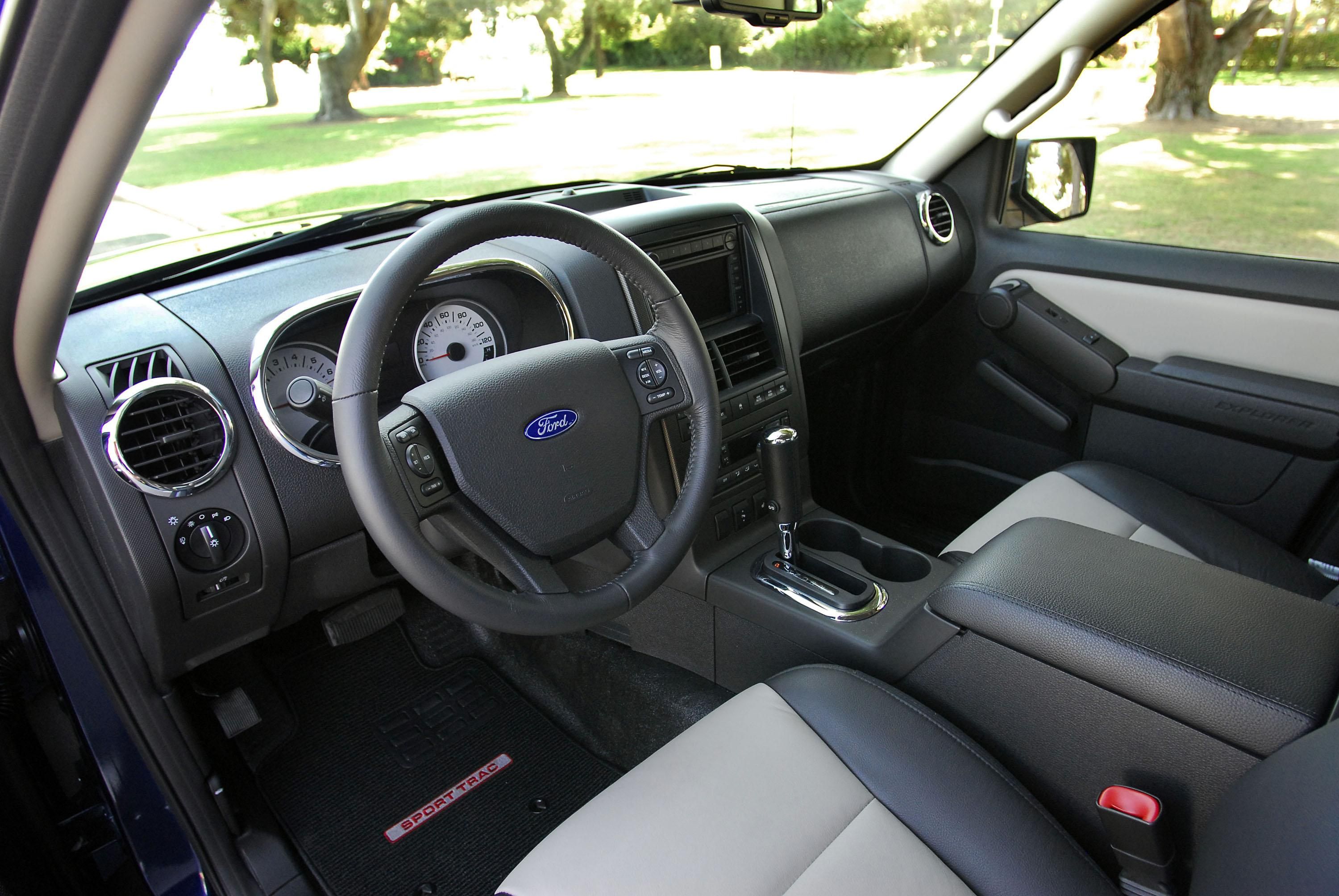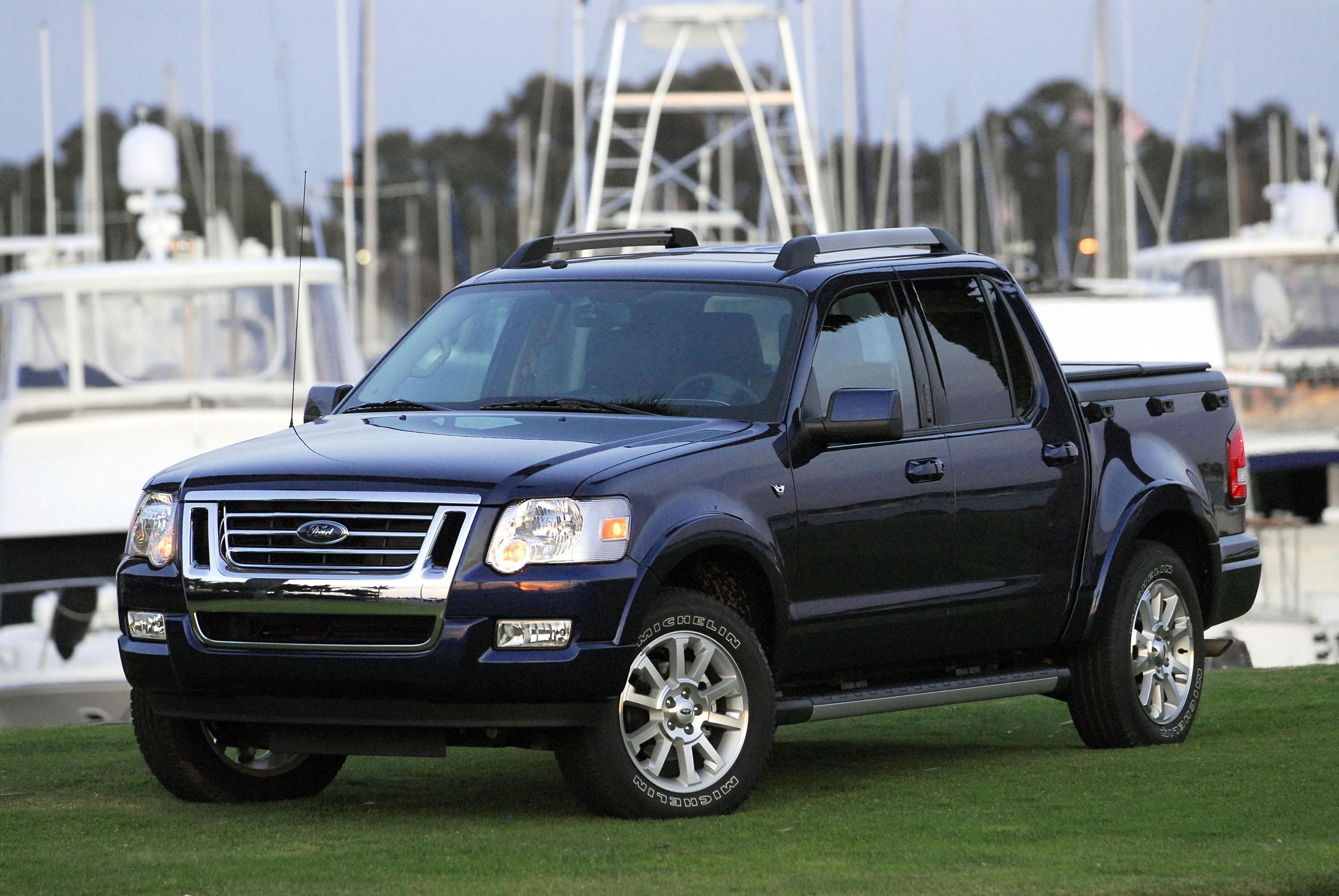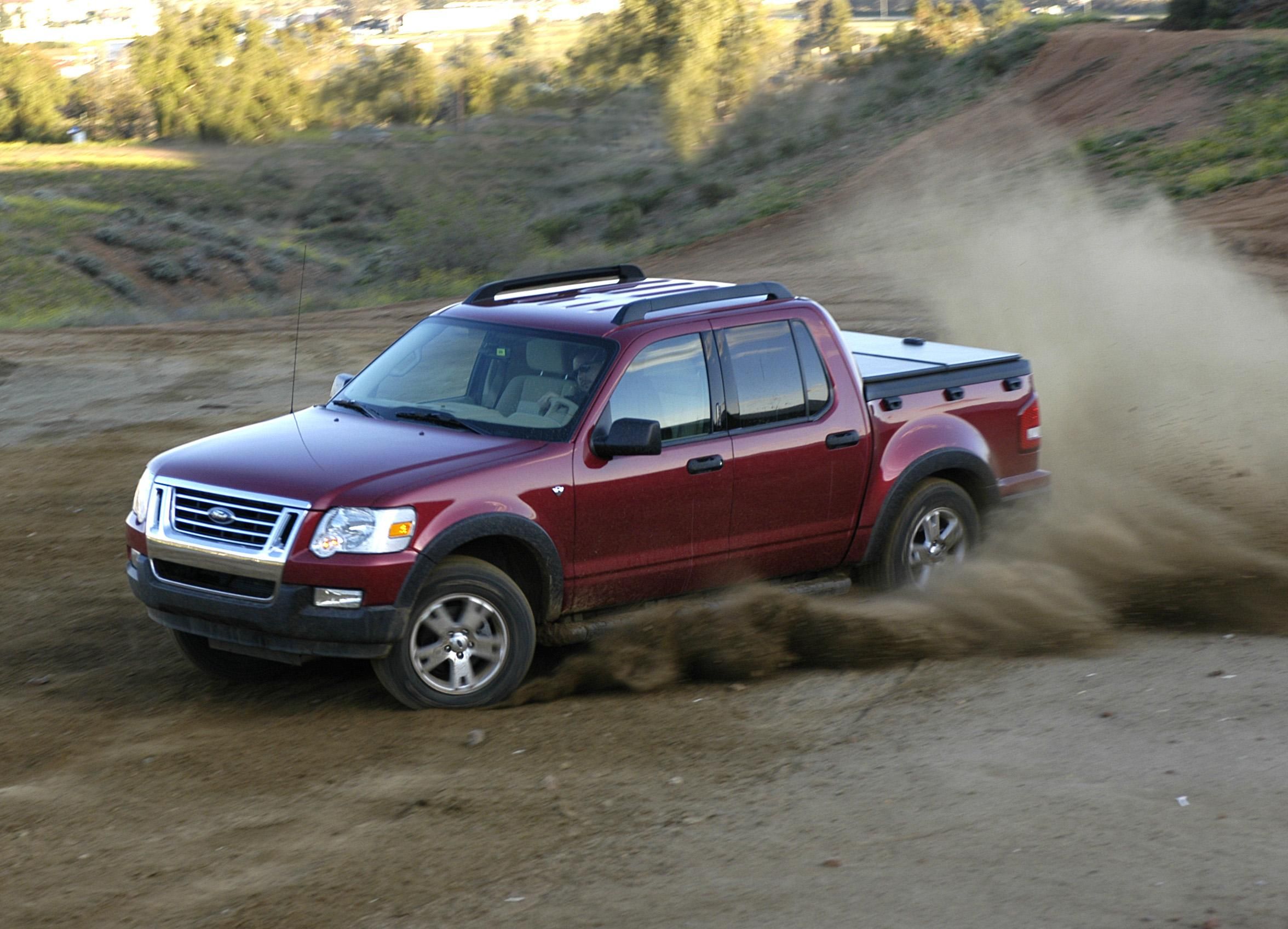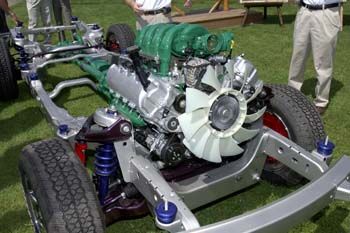The 2007 Ford Explorer Sport Trac combines attributes of the best-selling Ford Explorer and best-selling Ford F-150. The Sport Trac is new from the ground up, including its innovative cargo box with tiered storage and a trio of integrated storage bins, complete with drain plugs.
ford-explorer-sport-trac
- Make: Array
- Model: ford-explorer-sport-trac
2007 Ford Explorer Sport Trac
- Make: Array
- Model: 2007 Ford Explorer Sport Trac
- Horsepower: 242@5750
- Torque: 3550
- Transmission: 6-Speed Automatic
- [do not use] Vehicle Model: Array
“Ford Explorer Sport Trac is designed for customers who demand the comfort and refinement of a five-passenger SUV as well as a tough and rugged adventure vehicle for hauling everything from mountain bikes to landscaping supplies,” says Steve Lyons, group vice president, North America Marketing, Sales and Service. “The all-new 2007 Sport Trac delivers all of the multi-functional character of the original, and does it better than ever.”
Everything New Outside: Rugged design inspired by Explorer and F-150
The first thing one notices about the 2007 Sport Trac is its contemporary new look, which blends tough truck exterior cues also found on the new 2006 Explorer and F-150 pickup. The tough and ready appearance is an overt nod to Sport Trac’s truck and SUV siblings, each dominant leaders in their respective class.
From the B-pillar forward, the Sport Trac design is shared with the 2006 Explorer, including the standard chrome-finished grille, powerdome aluminum hood, and pronounced wheel arches. The rear doors are unique, and the C-pillar arch serves as a visual separation between the people space and cargo space.
The 4 ½-foot cargo box is constructed of corrosion-proof sheet molded composite (SMC) with a molded-in black inner liner that resists scratches and is dent-proof. The box is notched, allowing customers to place two 2x4 boards across the span to provide tiered storage of materials – including the ubiquitous 4x8 sheets of plywood. The outer SMC shell is painted body color and accented with tie-down anchors, emphasizing the Sport Trac’s functional design.
Inside the box are three integrated cargo bins designed to maximize cargo-carrying ability and contribute to Sport Trac’s versatility. The bins are recessed into the bed floor, with two six-pack-sized bins in the right and left rear of the box and one large bin that runs the length of the box headboard. The bins are equipped with weather-resistant lids and removable drain plugs for storing wet gear or ice.
An available tubular aluminum cargo cage acts as a cargo divider or can be swung out as a bed extender for extra storage capacity when the tailgate lowered. An optional, locking hard tonneau cover keeps gear secure from the weather and would-be thieves.
Everything New Inside
Sport Trac’s rugged exterior image carries over into the personality of its interior. Sport-designed seat styles and standard Tuflor™ rubber floor covering are designed for tough utility, allowing owners to wash out mud and grime with relative ease. Sport Trac is equipped with Berber-carpeted floor mats, further complementing its rugged image. The interior seats five passengers and benefits from many of the same noise, vibration, and harshness improvements of the 2006 Explorer, making for an exceptionally quiet and comfortable cabin. Two-tone leather seating surfaces are available, as are heated front seats with 10-way power adjustment.
When the weather turns cold, Sport Trac offers the segment’s only heated windshield, using micro-wires embedded in the glass, which helps prevent fogging and speeds up de-icing.
Unique interior door-release handles are another innovation found in the interior, ergonomically designed to the shape of the human hand at rest. Sport Trac features a new console-mounted gear selector designed after that of the F-150 pickup.
The standard audio system features a CD player with MP3 compatibility, and can be upgraded to the available six-disc, in-dash CD player with powered subwoofer. Integrated SIRIUS satellite radio is also available.
-----
Chassis
The 2007 Ford Explorer Sport Trac offers an all-new chassis that delivers impressive durability and capability inspired by the Ford F-150, paired with the class-leading ride and handling of the 2006 Ford Explorer.
The key to Sport Trac’s new, refined driving character and increased capability is its all-new frame. The new, tube-through-tube design provides a 444 percent increase in stiffness over the previous model. The all-new front suspension features short- and long-arm geometry and monotube shocks for additional ride control and comfort. For the first time, Sport Trac is offered with an independent rear suspension (IRS), designed to deliver the capability of a pickup truck and the ride comfort of passenger car.
“You wouldn’t even want to bring in a comparison to a compact pickup in terms of ride and handling,” says Raj Nair, SUV and Body-on-Frame vehicles executive director. “The highest praise I can give the Sport Trac team is that they achieved the same driving experience as the new Explorer. Like Explorer, the new Sport Trac is just as comfortable on the freeway as it is driving down a washboard road, with the ideal balance of road isolation and ride control.”
To maximize manufacturing efficiency, the new Sport Trac shares much of its hardware with the new 2006 Explorer. However, the engineering team tuned the component systems to fit the unique requirements of the Sport Trac, according to John Davis, Sport Trac vehicle engineering manager:
“Conceptually, the fundamental architecture is the same as the 2006 Explorer. However, we added almost 17 inches in wheelbase to the frame as well as minor modifications such as the spare tire carrier, a unique driveshaft carrier, and a unique, integrated tow bar.
“Although the chassis hardware is identical, it is tuned differently. We really created a new product, and needed to tune the chassis as a system. For example, we use a unique steering ratio to accommodate the longer wheelbase, and stiffer dampers, coil springs, and roll bars to accommodate the change in weight distribution.”
All-new, tube-through-tube frame is 444 percent stiffer
The driving dynamics of any vehicle are founded upon the strength of its frame. Fortunately, the 2007 Sport Trac offers an all-new frame that is shared with the 2006 Explorer. This frame is 444 percent stiffer torsionally than the previous Sport Trac assembly, even though the wheelbase increased 4.3 inches.
Extensive computer-aided engineering (CAE) modeling enabled engineers to add strength where it was needed. For example, the new frame rails feature taller and wider sections than before. In crucial areas, the sections are also thicker for additional strength where it’s needed, without added extra weight where it’s not.
Possibly the most significant change was moving from traditional flat joints – with the cross beams attached to the top of the frame rails – to box joints. The Sport Trac adopts the F-150’s tube-through-tube frame design, where the cross beams pass through the frame rails, creating an inherently stronger joint. These joints are then completely welded around the perimeter.
“Lift the body off the Sport Trac, and you will see the little brother of the F-150 frame,” says Nair.
The stiffer frame also helps eliminate squeaks and rattles in the cabin, improving long-term customer satisfaction.
“One of the easiest ways to detect frame flex is noise in the cabin,” says Davis. “As the frame moves, it causes body panels and trim pieces to squeak and rattle as they shift position. Thanks in large part to the new frame, the 2007 Sport Trac is remarkably quiet, even on our toughest off-road washboard tests and four-post shaker tests.”
Like the 2006 Explorer, the new Sport Trac features a factory tow hitch integrated into the last crossmember of the frame. This contributes to the stability of the frame, and cuts down on the added weight of a secondary, bolt-on aftermarket receiver. A Class II receiver is standard, while a Class III/IV trailer tow package is available. The tow receiver is modified from that of the new Explorer, as the Sport Trac bar dips down, under the fascia of the rear step bumper.
New suspension attachment points and post-hole piercing improve isolation, build quality
In addition, the new Sport Trac features all-new body and suspension mounts. These brackets also benefited from extensive CAE modeling, adding strength without adding unnecessary weight.
Many of the body and suspension attachment points are manufactured with a post-piercing technique. Instead of pre-drilling the holes before assembly, with post-piercing the brackets are mounted to the frame and then the holes are pierced.
Before, the holes had to be made larger than necessary to compensate for manufacturing variances. These variances in the frame could add up to six millimeters in total. Mounting the bracket and then punching the hole removes much of that variance from the equation. Some tolerances have decreased as much as 50 percent, providing much better build quality, with consistent fit and finish and fewer long-term squeaks and rattles.
Such an improvement is evident in how the Sport Trac cargo box is mounted to the frame. Previously, the margin between the cab and bed was set by using plastic spacers sandwiched between the two surfaces. After the bed bolts were run through, the spacers were removed. Improvements for the 2007 program, such as the precision of post-hole piercing, enable mounting the box without any manufacturing aids.
New body mounts were also used to improve the overall noise, vibration, and harshness of the 2006 Explorer. The new, softer mounts feature butyl rubber for improved damping and tuning. The stiffer frame and softer body mounts help isolate road inputs before they can reach the passenger compartment.
“Before, the majority of our body mounts were natural rubber or urethane,” says David McCreadie, Sport Trac vehicle NVH supervisor. “Where appropriate, we’ve used new mounts made of butyl rubber to help dampen impacts, rather than bounce on impact.”
According to McCreadie, this new butyl rubber allowed the NVH engineering team to help isolate road impacts transmitted into the cabin. This, in turn, allowed the chassis dynamics team to provide a firmer suspension tuning, for improved handling without sacrificing ride comfort or road isolation.
All-new, fully independent suspension takes advantage of frame improvements
To capitalize on the stiffer frame and improved isolation from road impacts, engineers developed an all-new front and rear suspension for the 2007 Sport Trac. The suspension features a short-/long-arm, coil-over-shock design. The new, stamped-steel upper and lower control arms are both stronger and significantly lighter. As a result, engineers were able to accommodate the available 18-inch wheels without negatively increasing unsprung weight.
Both the front and rear suspension assemblies incorporate new monotube shocks, again to take advantage of the new road isolation and frame stiffness. Compared with traditional twin-tube shocks, monotube shocks enable much more tuning flexibility, delivering softer reaction to impacts – such as potholes and expansion joints – while providing exemplary body control over larger road undulations and under cornering.
Like most of its competitors, the previous Sport Trac featured a live rear axle, suspended on leaf springs. For 2007, the Sport Trac features the same independent rear suspension (IRS) assembly showcased on the Explorer.
This all-new suspension features a patent-pending trailing blade that features a stamped-steel arm with an integrated casting for the knuckle attachment and welded steel-tube control arms. The coil-over springs and stabilizer bar have slightly stiffer rates than those of the 2006 Explorer, to accommodate the change in weight distribution. Like the front suspension assembly, the IRS features significant weight savings for decreased unsprung mass.
IRS offers significantly better handling over both smooth and rough surfaces as each wheel reacts independently to bumps in the road, moving both up and rearward to absorb the bumps and reduce impact harshness. The IRS’s ability to soak up longitudinal forces, such as those imposed by potholes or sharp pavement bumps, translates directly into a more comfortable ride and reduced harshness. Maintaining lateral stiffness helps keep the rear of the vehicle from swaying side-to-side in bumps or maneuvers.
The trailing blade design, with a large bushing at the connection of the trailing blade and frame, helps further isolate rearward impacts.
“The bushing acts as a ‘soft spring,’” says Davis. “During an impact, the bushing absorbs more energy that would otherwise travel into the passenger compartment.”
In addition, the suspension’s ability to maintain optimum contact between the tires and pavement also helps communicate important feedback – handling “feel” – to the driver through the steering wheel.
In addition, IRS drastically reduces rear-end skate, which is the lateral movement that occurs when a vehicle with a solid rear axle travels over sharp bumps or washboard/corrugated road surfaces.
The Sport Trac also features the innovative porthole-in-frame design, first introduced on the 2002 Explorer, where the IRS halfshafts pass through the frame rail. This lowers the IRS assembly even further, providing a lower center of gravity for improved handling. Lowering the IRS assembly also enabled the engineering team to incorporate storage bins under the floor of the cargo box.
Improved braking system contributes to increased payload capacity, increased towing capacity
To match the increased capability, 2007 Sport Trac now features sizeable, four-wheel-disc brakes: 305- x 30-millimeter vented front discs, and 301- x 12-millimeter solid rear discs. The two-piston front calipers measure 51 millimeters for increased pad surface area. In addition, new caliper housings are stronger for less flex under full brake pressure. This provides increased braking effectiveness and improved heat.
As a result, the 2007 Sport Trac delivers an impressive 1,450 pounds of payload capacity and 6,800 pound towing capacity.
“It was essential that the new Sport Trac match the confident towing manners of the Explorer,” says Davis. “You want to make sure the tow vehicle is in control of the trailer, not the other way around. A significant amount of chassis testing was done to validate that the suspension, powertrain, and braking systems are confident and composed, even when pulling a trailer that weighs almost 3,000 pounds more than the truck.”
Contributing to the confident nature of the Sport Trac is the standard four-wheel, four-channel antilock braking system (ABS) with electronic brake force distribution (EBD). The ABS with EBD systems work in unison for dynamic brake-force proportioning, measuring braking force versus traction and allocating brake pressure to the wheels that have the best grip even before the ABS system kicks in. This helps reduce the braking distance. The confident braking system is paired with standard AdvanceTrac® with Roll Stability Control, creating a comprehensive active safety system to help prevent accidents from occurring.
New, drooping-flow steering system and available 18-inch wheels
The front end also benefits from a new, low-friction rack-and-pinion steering system. The system features a “drooping flow” pump that reduces steering efforts at parking-lot speeds. However, as the speeds increase, the steering system automatically decreases assistance, for a firm, confident feel on the freeway. A unique 17.4:1 steering ratio is used on 2007 Sport Trac, to account for the 16.8-inch increase in wheelbase compared to the 2006 Explorer.
“The steering is really remarkable,” says Davis. “In fact, some prefer the steering feel of the new Sport Trac to that of the Explorer. It’s nice and light at low speeds, making the Sport Trac very easy to maneuver in and out of parking spaces. Yet, you don’t want light steering efforts at highway speeds, as that can cause drivers to input steering changes they didn’t really want.”
The steering system also benefits from improved mounting brackets and the revised front suspension. As a result, tactile vibration felt through the steering wheel has decreased by 35 percent.
Finally, the Sport Trac will be available with three wheel-and-tire packages:
- 16-inch wheels with P235/70R-16 all-season tires
- 17-inch wheels – a first for Sport Trac – with P245/65R-17 all-terrain tires
- 18-inch wheels – also a first for Sport Trac – with P235/65R-18 all-season tires
Profile on Raj Nair, SUV and Body-on-Frame Vehicles executive director
Overseeing the product development of Ford body-on-frame vehicles, Raj Nair has seen firsthand the advantages the new Sport Trac offers over the competition:
“The new chassis architecture is really an elegant engineering solution. The tube-through-tube frame features impressive torsional and bending rigidity, enabling a level of driving dynamics, refinement and build quality that is normally associated with unibody passenger cars. Plus, the new frame features the improved load isolation of a full body-on-frame vehicle, delivering capability that’s close to a full-size truck.
“Paired with the new, fully independent suspension, the frame delivers ride and handling that is a quantum leap beyond what the competition offers. It’s an ideal balance of ride control and road isolation. It’s really comfortable in any situation – on the freeway, on a twisting two-lane mountain road or on a washboard two-track.”
For Nair, the Sport Trac also represents an elegant solution for delivering unique, niche products:
“The new Explorer and Sport Trac program is an example of how Ford is going to be more flexible, creating different top hats to fit a common platform. We are able to address the niche market the Sport Trac occupies very efficiently by sharing platform costs with the Explorer. Yet, we tuned the Sport Trac as a unique system, delivering an uncompromised vehicle with a very distinct personality.”
-----
Powertrain
The 2007 Ford Explorer Sport Trac showcases Ford Motor Company’s philosophy that advanced engine technologies can improve both performance and the environment.
For example, the Sport Trac’s standard 4.0-liter V-6 engine now meets federal Tier II, Bin 4 tailpipe emissions, the same as the Ford Escape Hybrid.
For the first time, the Sport Trac is available with a V-8 engine. The 4.6-liter, three-valve V-8 is the most powerful engine in its class, delivering 292 horsepower. In addition, the V-8 is paired to the only six-speed automatic transmission in its competitive set. As a result, the new 2007 Sport Trac V-8 powertrain is expected to deliver more than 20 miles per gallon on the highway, for fuel economy that rivals or beats that of the competition’s V-6 powertrains.
“Performance and fuel economy can go hand-in-hand if you invest in the right technologies,” says Dave Szczupak, vice president, Powertrain Operations. “That’s why Ford is investing in six-speed automatic transmissions, electronic throttles, variable cam timing and other advanced powertrain technologies.”
Ford has a leadership position in powertrain technologies such as six-speed automatic transmissions to simultaneously boost performance and fuel economy without necessarily going to larger engines. This investment in technology is particularly appropriate in the SUV market, where Ford is increasing capability without resorting to larger-displacement engines that consume more fuel.
“The new V-8 and six-speed automatic drivetrain is a tremendous advantage for the 2007 Sport Trac,” says Raj Nair, SUV and Body-on-Frame Vehicles executive director. “Not only does it offer more power, more refinement and better fuel economy, but it also offers increased utility. The additional power output delivers impressive payload capacity and towing capacity – up to 1,390 pounds and 6,800 pounds, respectively.”
4.6-liter V-8 with variable cam timing, provide Explorer with best-in-class power
For Sport Trac enthusiasts, the most significant powertrain improvement will be the introduction of the V-8 engine.
“Customers have been asking for a V-8 since day one,” says Bryan Olson, Sport Trac marketing manager. “These customers want the added capability and towing capacity, as well as the power and performance that only a V-8 can deliver.”
The new 4.6-liter V-8 features three-valves per cylinder and single overhead cams with variable cam timing. These features are common with the highly lauded 2005 Ford Mustang GT as well as the 5.4-liter V-8 in the F-Series pickups and Expedition. With the introduction of the 2006 Explorer and 2007 Sport Trac, Ford Motor Company is approaching one million three-valve V-8s produced. This multi-application approach to Ford’s “modular” V-8s delivers benefits in manufacturing efficiencies, proven customer reliability and performance.
In the Sport Trac, the 4.6-liter V-8 delivers 292 horsepower at 5,570 rpm, and 300 pound-feet of torque at 3,950 rpm.
The three-valve heads enable a higher compression ratio on regular grade 87 Octane gasoline. Two of each cylinder’s three valves are intake valves, because more airflow into the engine means more power output. A new, tuned-length exhaust manifold offers optimized exhaust flow to help scavenge burned gases from the cylinders.
The three-valve heads feature center-mounted spark plugs that offer three benefits:
- Placing the spark plug in the center of the cylinder provides symmetrical flame for more complete fuel combustion. This extracts more power from the engine while decreasing the amount of unconsumed fuel in the exhaust system, resulting in low emissions
- A longer and narrower spark plug design enabled powertrain engineers to use larger-diameter valves, for increased economy and performance
- The compact coil-on-plug ignition system enables the powertrain control module (PCM) to more precisely control the spark, again for improved efficiency
The three-valve heads are smaller and lighter than equivalent four-valve heads. Their large dual-intake ports provide a direct path to the twin intake valves for better airflow at peak engine speeds. At lower speeds and loads, a charge motion control valve (CMCV) closes, increasing air velocity and in-cylinder motion for optimum fuel economy. Likewise, lightweight intake and exhaust valves reduce inertia for high-speed performance capability, while enabling lower friction for fuel economy. The cylinder heads are capped with lightweight magnesium cam covers that help suppress valvetrain noise.
The ABCs of VCT
Variable camshaft timing (VCT) plays an important part in generating more power as well as improving efficiency and reducing emissions.
The VCT system allows up to 50 degrees of cam variation in relation to the crankshaft angle. Ford’s “dual-equal” variable cam timing design shifts the timing of both the intake and exhaust valves together, with a single camshaft per cylinder head. This provides all the benefits of variable valve timing – but creates far less complexity and adds less weight than VCT systems that actuate the intake valves separately.
The cam in each cylinder head operates both sets of valves using low-profile roller-finger followers, helping reduce friction. The powertrain control module (PCM) directs solenoids to alter the oil flow in the hydraulic cam timing mechanism, which rotates the camshafts in relation to their drive sprockets. The unit can shift between fully advanced and fully retarded in milliseconds.
The result is enhanced efficiency under low-load conditions, such as at idle or highway cruising, and increased power for brisk acceleration for times at high demand.
Class-leading six-speed automatic transmission
The 4.6-liter V-8 comes standard with a new six-speed 6R automatic transmission, introducing transmission technology normally found only in luxury vehicles to the Sport Utility Truck market.
For the best possible shift quality, each 6R transmission is bench tested at Ford’s Livonia ( Mich.) Transmission Plant. There, the transmission build quality is verified, detecting even minute variabilities in the manufacturing process which would normally lead to changes in shift feel. However, the 6R’s electronic controller is programmed with its own unique software to account for these variances, producing smooth, precisely controlled shifts that improve durability and customer satisfaction.
The electronically controlled transmission offers the smooth shift quality of a luxury car, but is fully tested for heavy-duty use. Not only does it execute shifts seamlessly, but it also contributes to the impressive towing capacity of the V-8 drivetrain. For example, the torque-converter assembly features three friction plates with improved durability and increased cooling flow for heavy-duty, high-load use.
For the first time on Sport Trac, the transmission selector is mounted on the center console (rather than the steering column). Configured in this way, the transmission can be shifted manually with crisp response, thanks to complete electronic solenoid control of the clutch elements. Lastly, focalized transmission mounts mean an even greater reduction in NVH levels.The 6R has a 6.04:1 gear-ratio span, compared to the V-6 model’s five-speed 5R55W5 automatic with a span in the range of 4.5:1. The wide ratio span and the extra gear of the 6R enable the engine to spend more time in the optimum powerband: either at peak power for acceleration, or at peak efficiency for more fuel economy.
The 4.6-liter overhead-cam V-8 delivers 292 horsepower and is expected to deliver more than 20 miles per gallon on the highway. In addition, the Sport Trac’s new V-8 engine meets federal Tier II Bin 5 standards, which is compliant with California’s Low Emissions Vehicle II (LEV II) standards.
Cleaner emissions on standard V-6 engine
The 4.0-liter V-6 features single-overhead cams and two valves per cylinder. For 2007, it’s rated at 210 horsepower at 5,100 rpm and 254 pound-feet of torque at 3,700 rpm. The torque curve is designed to be relatively flat across the entire engine range and to provide strong performance at nearly any engine speed. An equal-length composite plastic intake system improves sound quality.
New camshafts and spark plugs contributed to a 50 percent improvement in idle quality. Also, new engine calibrations and improved emissions controls cut smog-forming emissions by 74 percent.
“The new design reduces the complexity and cost of emissions controls while making a substantial cut in NOx emissions,” says emissions system manager Joel Beltramo.
The new system cuts emissions of nitrous oxides to 3.6 pounds per 15,000 miles, from 14.2 pounds by its predecessor – a 74 percent reduction. As a result, the 2007 Sport Trac with the standard V-6 engine is certified to the same federal tailpipe emissions standards as Ford Escape Hybrid.
To achieve the emissions reduction, the catalyst assemblies were moved closer to the engine’s exhaust manifolds because “hotter is better” for neutralizing NOx and other exhaust gasses. The air-fuel mixture of the V-6 was also recalibrated to stay in the catalyst systems’ “sweet spot,” with no loss of horsepower, torque or fuel economy.
The V-6 engine comes with a five-speed automatic transmission. The wide-ratio five-speed 5R55W provides good acceleration and fuel economy. In addition, the 5R55W has a single aluminum transmission casting that greatly reduces NVH and powertrain bending at higher speeds. To reduce noise, it utilizes a quieter oil pump and planetary gear designs.
Full-featured Control Trac® four-wheel drive delivers automatic torque transfer, and torque-multiplying low range
All Sport Trac 4x4 models now feature the advanced Control Trac® four-wheel-drive system with electronic logic controlling a two-speed transfer case.
Unlike competitive systems, Control Trac® operates automatically, and only when additional traction is needed. This increases safety and security without compromising fuel economy or NVH. This makes the new Control Trac system a big advantage for the Sport Trac, according to John Davis, Sport Trac vehicle engineering manager:
“Most of the compact trucks offer a fairly simple, mechanical part-time four-wheel-drive system. These systems require some sort of operator input to engage them. And when four-wheel drive is engaged, most are not suitable for driving on partially dry pavement.
“The Honda Ridgeline offers an automatic torque split, but it is front-wheel biased, meaning power is transferred from the front-wheels back. And it lacks a low-range for heavy-duty use.”
-----
Exterior and interior
Most Sport Trac competitors are based on compact pickups, and as such feature utilitarian interiors commensurate with starting prices less than $15,000.
By comparison, the 2007 Sport Trac’s all-new interior features the same level of craftsmanship, materials quality, and refinement as the 2006 Explorer. The result sets the standard for this class that the competition will be hard-pressed to match.
Those are not the only standards set by the Sport Trac. In addition, it offers the most legroom in its class, the quietest interior, and amenities like power-adjustable pedals, floor-mounted shifter, redundant steering wheel controls, MP3 audio, two-tone leather seating surfaces, and a heated windshield.
Wider track and longer wheelbase deliver class-leading accommodations
For 2007, the all-new Sport Trac increases in size, with the wheelbase stretching to 130.5 inches – 4.5 inches longer than the previous Sport Trac, and 16.8 inches longer than the 2006 Explorer. In addition, the front track increased 2.4 inches, to 60.9 inches, and the rear track has increased 3.5 inches, to 61.8.
In addition, Sport Trac offers up to two inches more front and rear shoulder room than most of its competitors.
Not all of the package improvements are visible, however. The 2007 Explorer Sport Trac features a class-leading suite of safety features (see the Safety Section for complete details), many of which were incorporated into the interior without compromising passenger accommodations.
Sport Trac interior shared with Explorer, inspired by F-150
The 2007 Sport Trac continues Ford Motor Company’s increased investment in– and attention to – interior quality. As such, the Sport Trac advances the interior renaissance first started by the 2004 Ford F-150.
“The introduction of ‘tough luxury’ on the latest Ford F-150 completely changed the rules for pickup truck interiors,” says Peter Horbury, vice president, Design. “People are spending much more time in their vehicles, so they expect more of the comfort, style and amenities from homes to be offered in vehicle interiors.”
Before the introduction of the current Ford F-150, truck interiors were Spartan, utilitarian spaces with tradesmen sensibilities. Good truck interiors were not judged by craftsmanship and materials quality, but rather by how easy it was to switch gears and use controls while wearing heavy work gloves.
“We really pushed the envelope of what a truck interior could be with the 2004 F-150,” says Pat Schiavone, design director of Ford Truck North America when the F-150 and 2007 Sport Trac were designed (Schiavone is now responsible for Ford car design). “The F-150 interiors featured a bold confidence and tough, visual strength necessary for a pickup. However, they also added a level of sophistication and craftsmanship that was unheard of in a pickup.”
According to Chelsia Lau, Explorer Sport Trac design director, the Explorer and Sport Trac advance the F-150 interior themes, resulting in an interior that feels both more rugged and more refined:
“The interior really defines the ‘tough luxury’ theme. The overall design has a clean and modern feel. Instrumentation has an intuitive layout and functional features are accentuated by strong geometric shapes. A prominent center stack makes a bold statement that echoes the exterior power bulge. Deeper, more expressive grains enhance the visual and tactile quality.”
The influence of the F-150 design can be seen on specific items, such as the bright-ringed gauges on the instrument panel and the circular air vents. It’s also very evident in the flow-through center console, with the prominent center-stack, clean symmetrical control and floor-mounted shift lever – a first for Sport Trac.
“Tough luxury” amenities include Tuflor™ rubber floor boards, two-tone leather seats, and heated windshield
The Sport Trac is available in two series: XLT and Limited. Both models feature a mix of rugged materials and class-exclusive amenities, furthering the “tough luxury” concept.
For example, the new Sport Trac retains a hallmark of the original model, with Tuflor™ floor covering. This rugged material offers hose-out, wipe-down convenience from muddy or snow-covered boots.
Sport Trac XLT models feature cloth seats trimmed in Camel or Light Stone, and a dark dot-matrix trim on the dash and interior door trim.
Limited models are available with exclusive two-tone cloth or leather-trimmed seats, and a more technical, carbon-matte finish on the interior trim. Limited buyers can also select available heated front seats and 10-way power-adjustable driver’s seat to fine-tune their seating comfort.
Sport Trac can also be had with an available heated windshield, a class-exclusive feature usually found only on high-end SUVs such as the Range Rover LR3.
The heated windshield features 548 micro-thin (.0009 inches) tungsten heating elements embedded in the glass. Electrical current passes through these elements, for almost instant windshield defrosting on icy winter mornings.
Finally, the standard CD player with MP3 compatibility can be upgraded to the available six-disc, in-dash CD player with powered subwoofer. For the ultimate in radio content, either AM/FM-stereo/CD audio system can upgraded with an integrated SIRIUS satellite-radio receiver.
Dramatically improved seating comfort, exclusive power-adjustable pedals, and impressive interior quietness
As traffic congestion gets worse, Explorer owners seek more comfort as they typically have longer commutes and drive farther on weekend excursions.
“One of the most consistent things all Sport Trac owners have in common is they spend a lot of time on the road,” says Barry Redler , Ford SUV group marketing manager. “Their average commute is 70 miles round-trip every day, and they routinely take longer road trips, spending an average of 300-500 miles on the road at a stretch. Seating comfort, quietness and other amenities are vitally important to make the ride more pleasant for all passengers.”
The front bucket seats are all new, designed to take advantage of the additional cabin room for enhanced comfort for drivers and passengers. A new seat foam offers a better balance between initial cushion and firmness – a critical factor for long-term comfort behind the wheel.
The seat frames feature improved seat travel. Combined with the available power-adjustable pedals – exclusive in this segment – and tilting steering wheel, the Sport Trac can now be easily tailored to drivers ranging from the two-percentile female (4’ 11” tall) to the 99th- percentile male (6’ 5” tall).
The new front seat frames also benefit back-seat passengers. The seat frames are set wider, and with a higher clearance, offering a more comfortable footwell for those riding in the back.
The 60/40-split rear bench seat can seat three people comfortably. When not in use, the rear seats feature articulating headrests that flip forward for improved rearward visibility. The seat backs also flip forward for cargo carrying.
Finally, the Sport Trac also benefits from the same comprehensive approach to NVH that delivered class-leading quietness for the 2006 Explorer. The NVH team focused on every aspect of the vehicle, from the exterior, interior, chassis, and powertrain to quell noise, vibration and harshness. The result produces an interior that is five decibels quieter than the 2006 Honda Ridgeline in internal Ford testing (see NVH feature story for complete details).
NEW SPORT TRAC’S ADVENTUROUS DESIGN BALANCES PEOPLE AND CARGO, FORM AND FUNCTION
- New Sport Trac retains core elements, such as nostrils in front grille, integrated cab and cargo box, bed-rail tie downs and cargo-box powerpoint
- B-pillar forward shared with 2006 Explorer, including chrome-finished grille
- Profile defined by sweeping C-pillar, large wheel arches, and available 18-inch wheels
- 37.5-cubic foot composite bed features three integrated storage bins in the load floor, and the strongest D-pillar in Ford Motor Company
- Bed and available Cargo Cage bed extender and hard tonneau cover tested to meet Built Ford Tough standards
One of the most remarkable aspects of the 2007 Explorer Sport Trac is its fully integrated, cohesive design. The new Sport Trac does not look like an SUV with the roof chopped off, nor does it look like a four-door version of a compact pickup.
“The 2007 Sport Trac looks like it started with a white sheet of paper, rather than a modification of an existing design,” says Scott Strong, design director, Ford SUV and Crossovers. “The team built off the strengths of the 2006 Explorer design, without it looking like pieces that were cut and pasted.”
The Sport Trac features carryover Explorer components from the B-pillar forward. From the B-pillar back, Sport Trac is completely unique, with full rear doors and a 37.5-cubic-foot composite cargo bed. To balance cargo volume and people space, engineers stretched the wheelbase to 130.5 inches – 4.5 inches longer than the previous Sport Trac, and 16.7 inches longer than the 2006 Explorer.
Designers used two tools to create a balanced, unified design: First, designers paid painstaking attention to details, such as matching the cargo bed contours to those of the doors and front quarter panels, creating a consistent play of light and shadows across the profile; second, designers agreed that form and function had to be equally important.
“That’s true of any good design,” says Chelsia Lau, Explorer Sport Trac design director. “The forms and shapes must convey the character and intent of the design. However, they must also contribute to the function and performance of the product.”
This was particularly true with Sport Trac. Current owners clearly love the distinctive, functional design of their Sport Tracs.
“Sport Trac buyers have no use for simple ornamentation,” says Barry Redler, SUV Group Marketing Manager. “They use the tie downs, the roof rails and the rubber interior floor on a regular basis, so functionality is just as important as form to Sport Trac owners.”
Chrome grille bracketed by twin “nostrils” defines the face of the 2007 Sport Trac
The design story for the 2007 Sport Trac begins with the front fascia. Both XLT and Limited versions of the Sport Trac feature the same, chrome-finished, three-bar grille.
The twin nostrils flanking the grille opening are a core design element for the Sport Trac, introduced on the original 2001 model. In addition, the nostrils and four-bar element visually connect the new Sport Trac to the Ford Truck family, as a similar design vocabulary is evident on some F-Series and Super Duty models.
“This grille really connects Sport Trac to the ‘tough luxury’ aspect of Ford Motor Company trucks,” says Lau. “The bold design symbolizes the strength and capability of the Sport Trac, but the chrome-finish and elegant execution deliver an underlying tone of sophistication that really gives this truck an aspirational quality.”
Adding to the grille’s prominence is a chiseled chamfer, or “ribbon,” that runs along either side of the aluminum hood’s powerdome. The ribbon begins near the base of the windshield and runs forward, following the power bulge as it cascades to meet the grille. On its downward run, the ribbon flanks the grille opening until reaching the top of the bumper. The hood is a great indicator of the Sport Trac’s first V-8, a 292-horsepower, 4.6-liter 3-valve engine under the hood.
Flanking the grille are new dual-beam headlamps. The rounded areas for each beam’s reflectors continue the geometric theme of the grille, while the turn signals “bite” into the fascia, creating a signature look for the Explorer family.
The bumper features a central overrider section, to accommodate longer front frame rails for improved safety protection. This overrider creates a tailored, athletic appearance by lessening front overhang at the corners.
The strong vertical elements of the front fascia further emphasize the Sport Trac’s wider track. Compared to the previous Sport Trac, the front track has increased 2.4 inches, to 60.9 inches. The rear track has increased 3.5 inches, to 61.8. In addition to creating more interior space, this wider footprint helps balance the proportions of the new model, and establishes a strong, planted stance. The increased stance works with strong design elements, such as pronounced wheel arches and large wheels, to give the new Sport Trac an athletic, capable image from any viewpoint.
Attention to detail creates a balanced, integrated profile
While the chrome-finished grille defines the face of the new Sport Trac, the profile is defined by the C-pillar. The Sport Trac’s C-pillar represents the line of demarcation, creating a dedicated volume for passengers, and another for cargo. The C-pillar features a smooth arch connecting the cabin and cargo box, which continues up over the rear door panel.
This design detail is the hallmark of the Sport Trac, setting it apart from the utilitarian design of most four-door pickups, which have squared-off, vertical separations between the bed and cab. Yet, the Sport Trac design team never considered creating an integrated cabin and bed. They felt such a design was too carlike, and out of context with the Sport Trac’s character. Instead, the team took advantage of the separation to accentuate the truck functionality of the Sport Trac.
“We established a strong theme with the C-pillar on the first Sport Trac,” says Lau. From the profile, it’s clear the Sport Trac is one-half truck and one-half SUV. Most competitors emphasize cargo capacity, with the second-row seats designed for occasional use.”
The long 130.5-inch wheelbase enabled designers to provide equal emphasis on passenger comfort and cargo volume. In fact, Sport Trac offers the most second-row legroom its class, and the most front and rear combined legroom in its class (see interior section of statistics).
In addition, the profile exhibits the craftsmanship and attention to detail that sets the Sport Trac apart from its competitors.
“Our freedom was from the B-pillar back,” says Lau. “So we spent a great deal of time integrating the bed and cab to create the balanced proportions and complementary interactions of light and shadow.”
First, the team raised the bed height, so that it created a smooth, vertical plane from the cowl through the beltline and into the bed rails. Strong, pronounced rear wheel arches and fender flares match those of the front quarter panel. The contour of the rear quarter panels was carefully refined, creating a consistent light reflection across the full profile.
The taller bed rail also helps balance the proportions of front and rear quarter panels, minimizing the effect of the lengthened wheelbase. The wheelbase is further masked by the integration of the runningboards and roof rails.
“The roof rails and step bars have a much larger section than before, and a more robust design,” says Lau. “They work in harmony with the chamfered line connecting the wheel wells, and connect the front and rear of the vehicle.”
Here, too, the larger wheels and wheel arches help create a balanced, planted stance. The standard wheels are 16 x 7 inches, wrapped in P235/70R16 tires. For the first time, the Sport Trac is also available with 17-inch or 18-inch wheels.
In addition, the bed features three integrated tie-down cleats on each bed rail. This is another core design element of Sport Trac, and serves both an aesthetic and functional purpose. The tie downs are larger than before, and have a stronger, more robust form language that adds visual interest to the bed rails. In addition, the cleats feature a wider span, so they can more easily accommodate larger-diameter ropes and tie-down hooks.
The runningboards feature rubber uppers that incorporate raised plates, dubbed “chiclets” by the design team. These rectangular pads serve a dual purpose, creating visual interest and providing addition traction when the rails may be wet or muddy.
Rear fascia continues attention to detail
These dual-purpose chiclets are also featured on the Sport Trac’s rear step bumper.
The first true bumper fascia on a pickup box contributes to the clean, integrated design of the Sport Trac.
Traditional pickup trucks hang a “floating” bumper from the frame. Because of manufacturing tolerances and the potential for body flex, there can be up to an inch of margin, or gap, between the bumper and body. The Sport Trac’s bumper fascia is cleanly integrated, wrapping around the bumper corners and into the cargo box, contributing to the “tough luxury” theme.
The tailgate also contributes to the attractive detailing of the Sport Trac. The carryover tailgate from the F-150 Styleside is bracketed by geometric lamps similar to those on the full-size truck. The white reverse lights are set on the same vertical plane as the tailgate’s large blue oval and “candy bar” nameplate.
“These are not arbitrary, random graphics,” says Strong. “This is another example of using subtle unifying design elements to complete the design. You don’t really notice them on the first glance. But, they still give strength to the design, much like the belt you wear with your suit.”
Profile on Chelsia Lau, design director, Explorer Sport Trac:
Chelsia Lau served as the design director for the Explorer family, overseeing the creation of the 2006 Explorer, and then the adaptation of the Explorer design to fit the 2007 Sport Trac.
“With the Sport Trac, half of the vehicle was already designed. Our flexibility was limited to the B-pillar back. Although we started with an existing architecture and design elements, we were able to produce a vehicle that is uncompromised, and has its own distinctive character.
“It’s really a functional difference between Explorer and Sport Trac. Both offer similar, capable outdoor characters. But Explorer is more focused on carrying people, where Sport Trac places equal emphasis on cargo and people.
“They share a lot of the same vocabulary, but we accentuated different characteristics. Both are capable, rugged, and adventurous vehicles. The Sport Trac really emphasizes the fun and adventure that are more subdued in Explorer. If Explorer is at home parked in front of a ski lodge in Aspen, the Sport Trac is parked next to the surf at Long Beach.”
For Lau, this sense of fun and adventure also sets the Sport Trac apart from its competitive set:
“There’s much more drama in the Sport Trac design. I think when people look at Sport Trac, they see fun and adventure and excitement. Most pickups are still utilitarian designs. They look like tools, intended more for work than for recreation.”
Composite bed tested to Built Ford Tough standards
Although the Sport Trac design features a great deal of refinement and detailing, it is not merely a pretty face. The Sport Trac has been tested to the same Built Ford Tough standards of every Ford pickup, from the Ranger to the F-350 Super Duty. In addition to off-road and towing validation, the Sport Trac is subject to a battery of tests to verify the strength of its cargo box.
As with the original Sport Trac, the new model features a rust-proof, dent-proof composite bed. The entire box – with the exception of the F-150’s tailgate – is constructed of sheet-molded composite (SMC). This delivers an estimated 20 percent weight savings over a traditional steel box. As before, the Sport Trac features a 12-volt powerpoint in the cargo bed.
Ford engineers developed a complete battery of tests to validate the durability of the composite bed. These tests include:
- The Drum Drop: A full, 55-gallon drum is dropped on the bed from a height of 10 inches, to validate the strength and resistance to cracking of the bed floor
- Two Fat Farmers: Two 300-pound sandbags are set on top of the bed rails, to verify that the bed rails will not deform under excessive loads
- The Hay Bale test: The bed is overloaded with square and round bales of hay, to test the side rails rigidity, and the ability of the D-pillar to resist deformation
“We really set out to break the cargo box,” says Ryan Delaney, Sport Trac structures engineer for the cargo bed. “Verifying how it performs under severe abuse helps ensure that the bed will survive most customer use.”
These tests validated the benefits of the new, hydroformed D-pillar – a U-shaped steel beam that encircles the tailgate. This patent-pending design proved to be the strongest, stiffest design in Ford Motor Company’s portfolio. In addition, the new design reduces the number of parts from 15 to eight, and saves seven pounds compared with a traditional D-pillar made of stamped-steel components.
Also patent-pending is the manufacturing process for the inner panels. There are four main components of the bed: The floor panel, the headboard panel, and two side panels. Molded into these panels are three concealed storage bins. One large bin runs the width of the headboard, while two smaller bins are tucked just behind each of the wheel wells, each large enough to hold eight 12-ounce cans.
The rear bins feature protective skids and recessed knobs to help protect the latch mechanisms. The headboard bin features a remote access latch tucked into the driver’s-side bed rail. The remote cable release and a gas strut enable owners to easily open the bin from outside the cargo box. All three bins feature sealed lids and an integrated trough system that help prevent water from entering the bins. The lids pass Ford’s 20-minute soak test, which simulates a car wash or heavy downpour.
To verify the durability of the bins, engineers loaded the Sport Trac bed with loads of gravel, top soil, and sand well past the payload rating for an F-250, in an attempt to push the bins past the breaking point. However, the lids survived without cracking, and opened easily, despite the seams being packed with debris.
“It’s a tough little truck,” says Delaney.
Even the Sport Trac’s available Cargo Cage bed extender and water-resistant hard tonneau cover were subjected to a battery of durability tests to verify their strength, corrosion resistance, and wear under severe abuse.
-----
Safety
The 2007 Explorer Sport Trac features the same class-leading safety package offered on the 2006 Ford Explorer, as a result, Sport Trac provides the most active and passive safety features in its class. Four of these are new adaptive technologies specifically designed for Ford’s stringent internal safety targets.
“The 2007 Sport Trac offers the same impressive suite of safety features as the 2006 Explorer,” says Sue Cischke, vice president, Environmental and Safety Engineering. “It offers active safety technology – including confidence-inspiring handling and braking combined with AdvanceTrac® with industry-exclusive Roll Stability Control (RSC®) – to help prevent accidents. In the case of an accident, the new Sport Trac offers enhanced rollover side-impact protection, and four new adaptive safety technologies that help tailor frontal-impact protection based on crash severity, occupant size and safety belt usage.”
In fact, the 2007 Sport Trac is designed to meet all known federal frontal- and side-impact crash requirements through 2010.
“Ford Motor Company is building on a legacy of introducing industry-first safety technologies, with a comprehensive approach to help drivers avoid dangerous situations and help provide increased protection in accidents,” says Cischke.
AdvanceTrac® with Roll Stability Control offers industry-exclusive active safety
The old adage that the best defense is a good offense is certainly applicable to automotive safety: The best accident protection is preventing the accident in the first place. Thus, Sport Trac offers a comprehensive active safety package to help prevent accidents from occurring.
Sport Trac’s agile handling and confident braking provide an added measure of safety and security during emergency maneuvers. Contributing to its confident nature is Sport Trac’s standard four-wheel, four-channel antilock braking system (ABS) with electronic brake force distribution (EBD). The ABS controls the front wheels independently and the rear wheels in tandem during heavy braking – to further help the driver maintain control of the vehicle. ABS with EBD employs dynamic proportioning, measuring braking force versus traction and allocating brake pressure to the wheels that have the best grip even before the ABS system kicks in. This helps reduce the braking distance.
Sport Trac’s exemplary braking system is paired with standard Advance Trac® with Roll Stability Control – an exclusive active safety system not offered by any other manufacturer.
This active stability enhancement system offers a significant difference when compared to typical systems. While typical systems are designed to control yaw or spinout only, Ford’s AdvanceTrac ® with Roll Stability Control goes one important step further.
It can enhance the vehicle’s resistance to rolling over.
Most systems use one gyroscopic yaw-rate sensor as they work to control yaw. AdvanceTrac ® with Roll Stability Control utilizes a second gyroscopic roll-rate sensor to determine the vehicle’s body roll angle and roll rate. If this unique roll-rate sensor detects a significant roll angle, the system applies additional countermeasures – such as applying brakes to one or more wheels or reducing engine power – to enhance vehicle rollover resistance.
AdvanceTrac® with Roll Stability Control is an integrated system of four major components that includes:
Anti-lock Brake System (ABS): ABS regulates brake pressure to help prevent wheel lockup when trying to stop the vehicle.
Traction Control: When the system detects a loss of traction, this quickly responds by reducing engine power when necessary and selectively applying brake force to the slipping wheel while transferring power to the opposite wheel.
Yaw Control: When understeer (which leads to skidding) or oversteer (which leads to fishtailing) is detected, the system selectively applies individual brakes and modifies engine power to maximize control.
Vehicle Roll-motion Sensor: This is the Ford-exclusive gyroscopic roll-rate sensor that helps monitor vehicle roll motion approximately 150 times per second. If it detects a significant roll angle, it automatically engages AdvanceTrac ® with Roll Stability Control to help keep all four wheels safely on the ground.
The system is automatically engaged every time the vehicle is started. However, a switch allows the driver to turn the system off during those rare times when she or he may want the wheels to spin freely to help the tires “dig” for traction, such as during low-speed off-road driving or when traveling through deep snow or mud.
Ford is the first automaker to develop AdvanceTrac ® with Roll Stability Control technology, and has more than 80 patents and patent applications pending worldwide for its industry-leading Roll Stability Control system. Ford is making the technology available to other companies and automakers through licensing agreements because we believe this technology has the potential of producing significant real-world safety benefits.
Class-exclusive adaptive safety technologies allow for optimized occupant protection
To meet federal safety regulations and Ford’s even more stringent internal safety targets, the 2007 Sport Trac offers the following advanced safety technologies as standard equipment:
Advanced Restraints Module and Dual Front-crash Sensors: An advanced restraint module is mounted at the center tunnel of the vehicle. It collects an array of input signals to detect both the impact severity and the seating position and size of the driver and front occupant. This information is processed using sophisticated computer algorithms to determine appropriate levels of protection by tailoring the adaptive technologies. Two crash sensors on the front structure allow for enhanced impact severity and crash mode discrimination.
Five-level Front-passenger Sensing System: Incorporated into the structure of the passenger seat, this advanced sensor is able to detect the size of the occupants based on five categories: empty seat, child presence, small adult presence, medium adult presence and large adult presence.
Adaptive Load-limiting Safety-belt Retractors: The adaptive load-limiting retractors are capable of providing up to three resistance levels. Based on input from the crash and occupant sensors, the advanced restraints control module electronically adapts the amount of belt resistance to help further enhance crash energy management while helping to reduce forces on the occupant.
Front-passenger Seat Adaptive Air-bag Tether: The passenger front air bag has an internal fabric tether that creates a smaller air bag size and shape when necessary. A pyrotechnically activated mechanism can release the tether when a full air bag is necessary.
Adaptive Air-bag Venting: Both front air bags are equipped with vents that divert some of the gas from the air bag inflator outside of the air bag. Adjusting the time the vents open adjusts the amount of gas vented, providing a less powerful air bag when it’s sufficient to help protect the occupant.
Adaptive Stroking Steering Column: The energy-absorbing steering column collapses as force is brought to bear on the driver’s air bag. Additionally, the adaptive “curl strap” offers tailored energy management protection based on the driver’s seating position. The curl strap deforms as force is applied, acting as a damper to slow the stroke of the steering column. For less resistance – or more “give” – a pyrotechnic pin is actuated, releasing the center section of the curl strap, requiring less force to activate the stroke of the steering column. When crash conditions call for a higher resistance, the pin remains in place, engaging the full curl strap for maximum resistance.
Dual-stage Front Air Bags: Federal Motor Vehicle Safety Standard 208 (FMVSS 208) requires that both belted and unbelted front passengers be provided with significant levels of protection in the event of a frontal collision. To help balance the needs of what are two quite different situations, the 2007 Sport Trac uses dual-stage front air bags. These employ inflators that offer lower or higher inflation levels that help tailor the deployment of the air bags to the severity of the crash situation.
Driver-seat Position Sensor: This sensor monitors driver seat position to estimate the driver’s size by his or her distance from the steering wheel. This information is used to determine inflator output, air-bag vent timing, safety-belt resistance level and the steering column energy absorption setting.
“Simply put, all safety features help manage the forces on the occupants during an impact,” says Jeff Laya, Sport Trac crash safety supervisor. “These new adaptive safety features all work together to estimate the size of the occupant and impact severity, and are then tailored to manage those forces. If you think of it in a slow-motion sequence, the safety belts absorb some of the energy, then the air bag absorbs more, and then the stroking steering column absorbs even more. We can provide enhanced protection for a wide variety of circumstances and tailor the protection to each individual event.”
Safety Canopy ä with “roll-fold” technology and enhanced rollover and side-impact protection
In addition, the new Sport Trac features a comprehensive list of improvements to help further protect occupants during rollover or side-impact.
For the first time, the Sport Trac is available Safety Canopy ™ side air curtains that deploy in certain side-impact collisions, or if an impending rollover is detected to help protect front- and second-row outboard occupants. Safety Canopy ™ side curtains remain inflated for several seconds after deployment to enhance protection during an extended crash event.
The air curtains feature "roll-fold" technology. If an occupant is improperly seated and resting his head against a window, the Safety Canopy™ is designed to slide between the glass and occupant as it inflates. An integrated front “sail panel” of fabric attached to the A-pillar further position the Safety Canopy™.
Also new for Sport Trac are standard side-impact air bags for the driver and front passenger. Mounted in the outboard side of each front seat, these air bags further enhance protection for the occupant’s chest in the event of a side collision.
The interior door armrests and the door trim also have been designed to help cushion the abdomen and lower torso during a side impact. And a four-inch-thick foam block installed between the exterior and interior door panels further helps manage side impact forces on the occupant’s hips.
All-new stiffer frame, continues innovative bumper compatibility
Contributing to the safety enhancements of the 2007 Sport Trac is its all-new frame. Its increased strength and rigidity provide increased levels of refinement and resistance to noise, vibration and harshness. The all-new frame works with Ford’s industry-exclusive adaptive safety technologies to help provide greater protection for vehicle occupants. For example, the front crush rails are designed to help absorb and manage to the force of an impact.
In addition, the 2007 Sport Trac continues Ford Motor Company’s bumper compatibility standard. Ford was the first to market with crash structures on SUVs that are compatible with passenger cars. When the Explorer was redesigned for the 2002 model year, the front bumper was dropped nearly two inches, to better align with the crash structures of passenger cars. The 2006 Explorer and 2007 Sport Trac retain that design, which helps to reduce damage to cars in common slow-speed incidents and allow lower vehicles' energy-absorbing bumpers to do their work.
Tradition of safety leadership continues
Another standard safety feature is a tire pressure monitoring system (TPMS) that uses sophisticated system utilizing radio-frequency transmitters. These transmitters are mounted inside the wheel, monitoring actual tire pressure every 30 seconds. If a low-pressure situation is detected, a warning is illuminated on the Sport Trac’s instrument panel message center. Further, as it monitors each wheel independently, the new TPMS is able to detect pressure loss before it affects vehicle handling and safety.
In addition, Sport Trac is available with a number of safety and security features, completing its safety packaging, including:
BeltMinder™: The most effective way to help save lives on the roadways is one of the simplest safety technologies on the market – the safety belt. Ford’s standard BeltMinder™ system provides drivers with a gentle reminder (in the form of a flashing icon on the instrument panel and an audio tone) to buckle up. According to federal estimates, every percentage point improvement in safety belt usage nationwide can save an estimated 280 lives a year.
SecuriLock™ Passive Anti-theft System: Sport Trac comes standard with SecuriLock™, designed to help prevent the engine from being started unless a coded key programmed to the vehicle is used. There are 72 million billion possible key code combinations.
Keyless Entry: The standard keyless entry permits door locking or unlocking from outside the vehicle with just the touch of a button. The driver’s-side remote keypad is available for additional security and convenience, as are approach lamps in the exterior mirrors that illuminate the area around the front doors.
-----
Special Features
The 2007 Sport Trac also features a host of improvements that are invisible to the eye, but instantly appreciated by the senses of hearing and touch. Every subsystem of the new vehicle has been tuned, engineered and redesigned to decrease noise, vibration, and harshness (NVH).
Occupants’ ears will appreciate the dramatically quieter interior, with diminished wind, road, and tire noise. Their tactile senses will notice a lack of unwanted vibration in the contact surfaces such as the seats, steering wheel, and floorboards.
Although it shares many of the NVH enhancements introduced on the 2006 Explorer, the new Sport Trac presented its own NVH challenges, according to David McCreadie, Sport Trac vehicle NVH supervisor:
“Most sound you hear in the cab is high-frequency noise, which is intuitive: The farther you are away from it, the quieter the noise is. It makes a big difference in what you hear if your ear is four inches away from the rear glass versus three feet away from the rear glass.”
Fortunately, the Sport Trac benefits from a new frame offering a 444 percent increase in torsional stiffness compared to the outgoing Sport Trac. From that starting point, engineers painstakingly examined every subsystem of the new Sport Trac for opportunities to quell unwanted NVH.
As a result, the Sport Trac has one of the quietest interiors in its class. The road and tire isolation is particularly apparent during average-speed, coarse-road evaluations. Compared to the Honda Ridgeline, the Sport Trac is a full five decibels quieter at 40 mph (66.4 decibels compared to 71.4 for the Ridgeline).
Polite drivetrain components:
For example, the stiffer frame enabled significantly softer engine mounts, isolating engine vibrations from intruding into the cabin. Both available engines also feature an additional exhaust resonator, improving the sound quality of the exhaust under heavy acceleration.
The standard 4.0-liter V-6 received a number of improvements, including a new camshaft and spark plugs. In addition, the idle speed has been lowered from 675 to 625 revolutions per minute. These cumulative changes have improved idle quality by 50 percent.
The new 4.6-liter V-8 benefits from three valves per cylinder and variable cam timing, improving performance, economy and refinement. Refinement is further improved by a larger airbox than before, delivering more air to the engine while decreasing induction noise. A new foam valley stuffer under the intake manifold’s charge motion control valves helps muffle induction noise.
Due to the 16.8-inch longer wheelbase, the Sport Trac also features a longer, two-piece driveshaft that proved to be more susceptible to vibrations than the Explorer’s shorter, single-piece component. To solve the issue, engineers modified the forward two bushings supporting the rear differential. For manufacturing simplicity, the new bushings were adopted by the Explorer program, further enhancing the Explorer’s driveline isolation.
New side mirrors actively prevent wind noise
Exterior changes for improved interior NVH include side mirrors that are significantly larger than before for improved visibility, but actually reduce wind noise compared with both the old design and to tests conducted with no mirror at all.
“Not only are they bigger,” says McCreadie, “but they’re also better in terms of how little noise they generate. The secret is in using the shape of the mirrors to manage the flow of air as much as possible. The mirror shell now actively prevents wind noise improving airflow around the vehicle profile.”
The team used extensive computer modeling and wind-tunnel testing to perfect the shape of the new mirrors. The “sail” that attaches the mirror to the door is both the correct distance and the correct angle in relation to the vertical edge of the mirror housing nearest the door. That vertical edge is parallel to the window glass, creating a smooth, continuous valley that doesn’t disrupt airflow between the glass and mirror housing.
The forward surface of the mirror housing was also carefully shaped to minimize turbulence that would otherwise impact the window glass. Finally, the shape of the outermost portion of the housing was tuned to help direct air away from the vehicle.
Integrated air deflectors quiet cabin wind noise
One of the unique challenges for the Sport Trac NVH team was air rushing up between the cabin and bed created unwanted wind noise in the cabin.
“Air was pushing up into the cabin’s air extractors,” says McCreadie. “So we studied several different solutions to redirect air away from them.”
The solution was an elegant, no-cost addition to the bed headboard. The mold for the sheet-molded composite panel was modified to incorporate two blades, each shaped like an inverted “T.” These blades are approximately one inch tall, and help deflect air that would otherwise rush up from the undercarriage, or slide in sideways in the cabin’s wake.
Noise-abating interior materials:
For the interior, engineers employed a host of new materials to help insulate the cabin from unwanted noise:
- Additional insulation in the door panels and between the dash and firewall help prevent tire and powertrain noise from intruding into the cabin
- A layer of lightweight fiber batting in the headliner acts like a large acoustic tile, preventing sound from echoing off the roof and back into the cabin
- Even the Sport Trac’s unique Tuflor™ rubber floor covering contributes to interior quietness, preventing road and tire noise from entering through the floorboards

